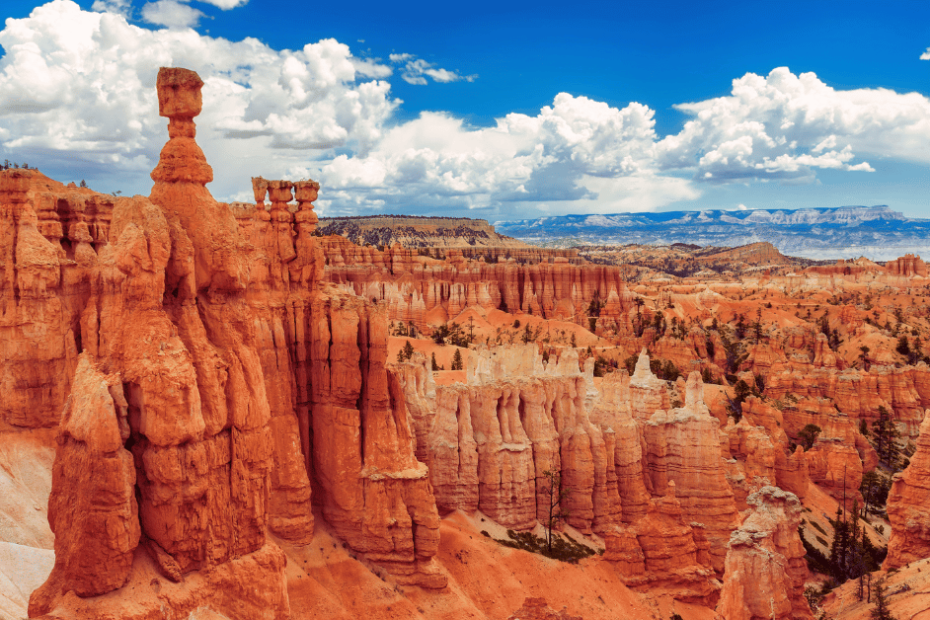Tired of the hustle and bustle of popular tourist spots? If you’re craving solitude and natural beauty, the least visited national parks in the US offer the perfect escape. These hidden gems provide stunning landscapes, unique wildlife, and the peace and quiet you won’t find in crowded destinations.
Imagine exploring pristine wilderness without the noise of large crowds. From remote deserts to secluded forests, these 19 national parks promise an unforgettable adventure. Get ready to discover the serene side of America’s natural wonders, where you can truly connect with nature.
Key Takeaways
- Solitude and Natural Beauty: Explore the least visited US National Parks to experience serene landscapes, unique wildlife, and escape the crowds.
- Diverse Ecosystems: From Alaska’s icy expanses to the tropical reefs of the Virgin Islands, these parks offer a variety of environments, each with its own unique attractions.
- Top Activities: Engage in activities like hiking, wildlife spotting, kayaking, and stargazing in remote and pristine settings.
- Hidden Gems: Discover lesser-known attractions such as secluded lakes, quiet campgrounds, and historic sites within these parks.
- Practical Tips: Plan visits during optimal seasons, prepare for limited facilities, and prioritize sustainability by practicing Leave No Trace principles.
Gates of the Arctic National Park and Preserve, Alaska
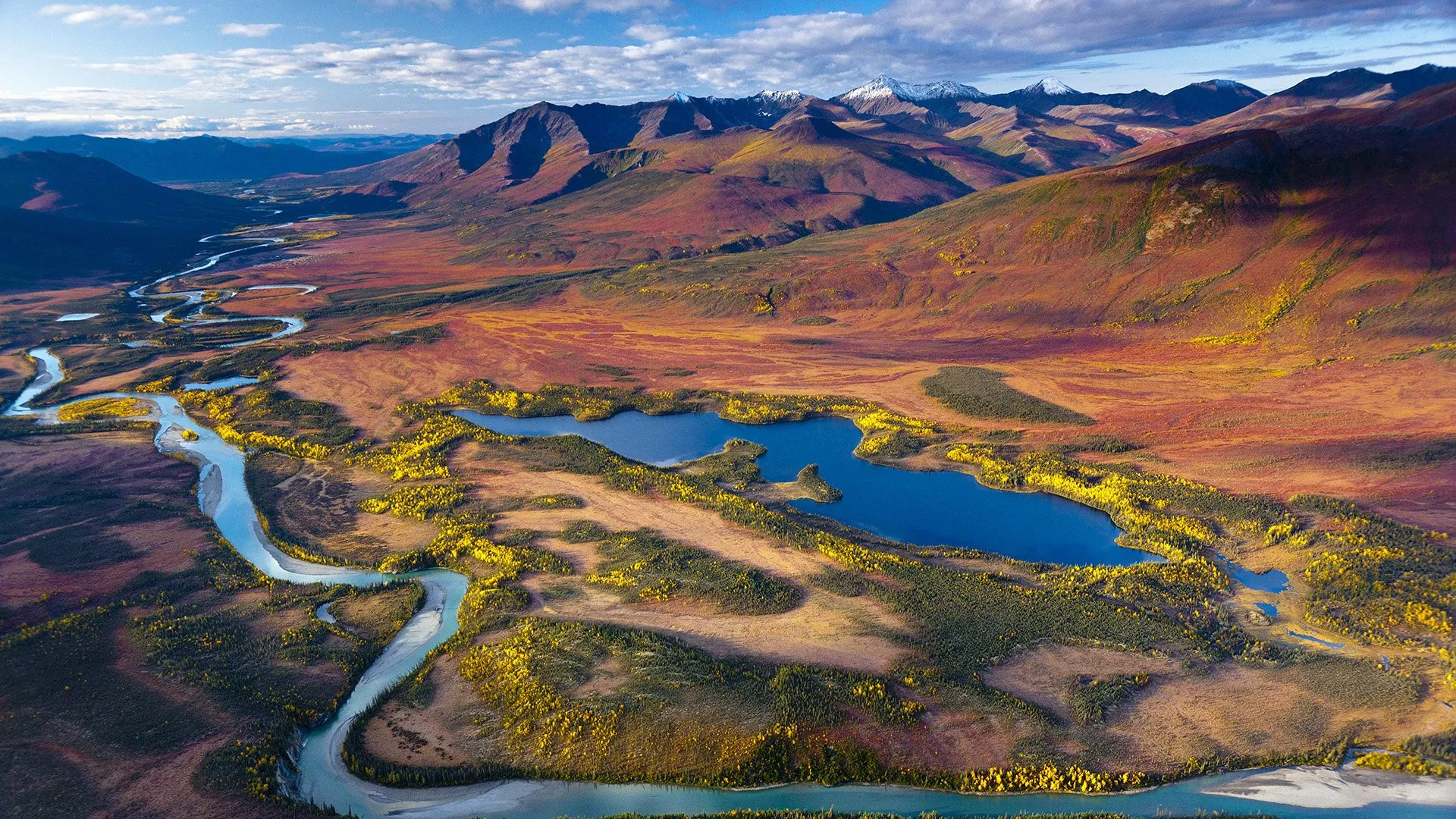
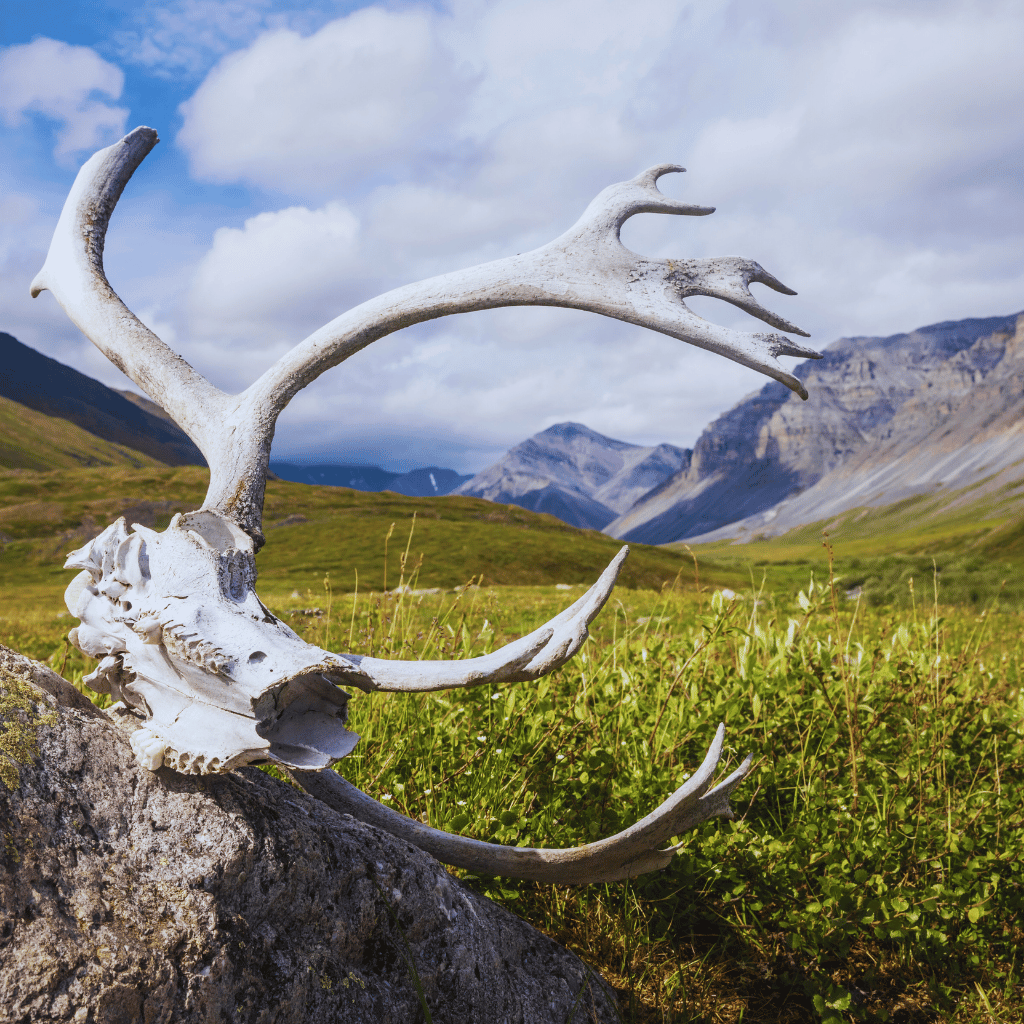
Experience True Wilderness
Immerse yourself in pristine landscapes that stretch as far as the eye can see at Gates of the Arctic National Park and Preserve. Located entirely above the Arctic Circle, this park offers unparalleled solitude and tranquility. With only 11,045 visitors a year, it’s the ultimate destination for those seeking to escape the masses and truly connect with nature.
Best Time to Visit
To experience the park at its best, plan your visit between late June and early September. During these months, the temperatures are more moderate, ranging from 50°F to 70°F, and the long daylight hours allow for extended exploration. If you’re into winter activities, visiting from November to March provides opportunities for dog sledding and witnessing the Northern Lights.
Top Attractions
- Arrigetch Peaks: This stunning collection of granite spires offers challenging climbs and breathtaking vistas.
- Schwatka Mountains: Perfect for hiking and offering panoramic views of untouched wilderness.
- Kobuk River: Ideal for rafting and fishing in serene settings.
- Caribou Migration: Witness one of the most impressive wildlife events as caribou herds traverse the park.
Hidden Gems
- Anaktuvuk Pass: This small village provides insights into the lives of the native Nunamiut people and serves as a starting point for numerous hiking trails.
- Walker Lake: A remote body of water accessible only by air, perfect for fishing and enjoying solitude.
- Aniakchak Crater: A massive volcanic caldera offering a unique geological experience seldom seen by park visitors.
Accommodations
Given the park’s remote location, accommodations inside the park are non-existent. But, several lodges and bed-and-breakfasts are available in nearby towns like Coldfoot and Bettles, offering various amenities and prices.
| Accommodation | Location | Amenities | Price Range (per night) |
|---|---|---|---|
| Arctic Getaway | Coldfoot | Wi-Fi, Home-cooked Meals, Tours | $150 – $250 |
| Bettles Lodge | Bettles | Air Transport, Guided Tours, Meals | $200 – $350 |
| Marion Creek Camp | Coldfoot | Basic Camping, Restrooms | $15 – $30 |
Dining Highlights
Dining options are limited, so it’s best to plan ahead.
- Coldfoot Camp Cafe: Offers hearty meals including Alaskan specialties like smoked salmon and reindeer sausage.
- Bettles Lodge Dining Room: Known for its cozy atmosphere and delicious home-cooked meals.
- Self-Catering: Given the remoteness, bringing your own food supplies is a practical option.
- Getting There: The park is accessible only by air or foot. Charter flights are available from Fairbanks to Anaktuvuk Pass, Bettles, or Coldfoot.
- Navigation: Bring topographic maps and GPS devices, as cell service is non-existent.
- Safety: Be prepared for extreme weather conditions and potential wildlife encounters. Always carry bear spray and emergency supplies.
- Sustainability: Pack out all waste, stick to established trails, and respect wildlife to preserve the park’s natural beauty.
Begin on an unforgettable adventure in Gates of the Arctic National Park and Preserve, where every step reveals a new, awe-inspiring facet of Alaska’s wild heart.
National Park of American Samoa
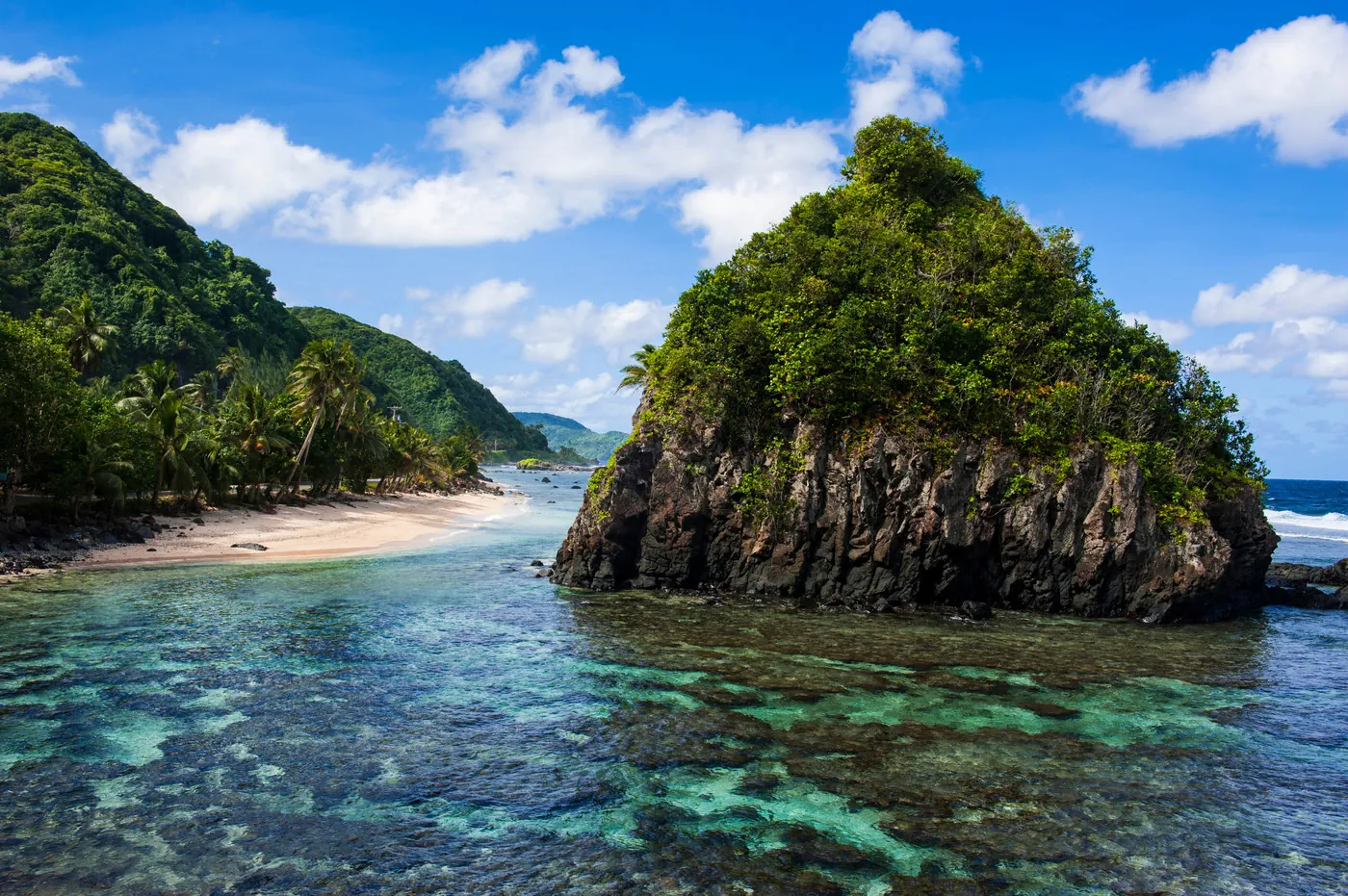
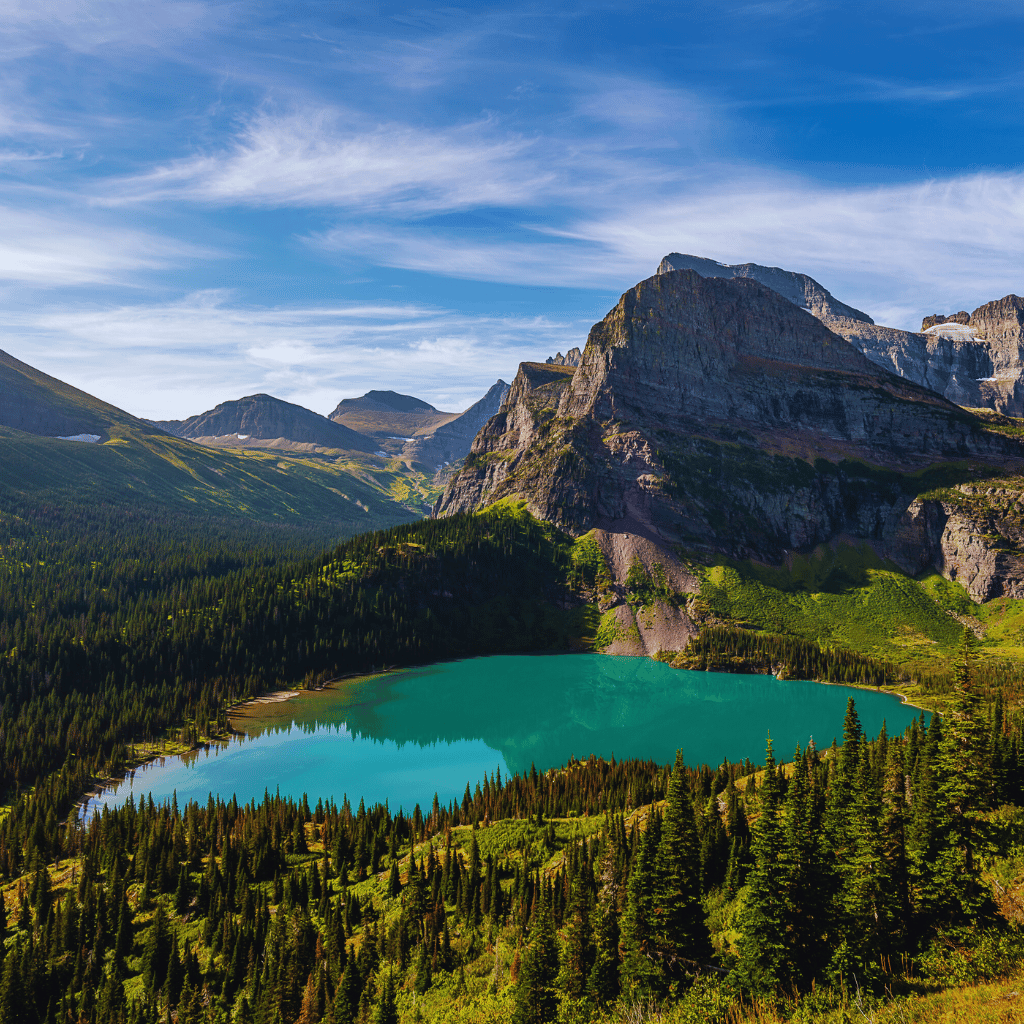
Unique Flora and Fauna
Nestled in the heart of the South Pacific, the National Park of American Samoa offers an unparalleled experience of lush tropical rainforests and vibrant coral reefs. The park spans three islands: Tutuila, Ofu, and Ta‘ū, each with its unique ecosystems. You’ll encounter the fascinating flying foxes, a type of bat that helps pollinate the forest’s many flowers. White terns, known for their ethereal beauty, are common sights as they flutter through the rainforest canopy. Under the waves, the coral reefs teem with marine life, providing a colorful spectacle of fish, sea turtles, and intricate coral structures.
Cultural Significance
The National Park of American Samoa isn’t just about breathtaking landscapes; it’s steeped in rich cultural history. The islands are home to the Samoan people, whose traditions and way of life have been preserved for thousands of years. When you visit, you’ll have the chance to immerse yourself in Samoan culture. Local guides often share stories and legends passed down through generations, giving you a deeper understanding of the land and its people. Participate in a traditional ‘ava ceremony or witness the art of weaving and tapa cloth making, practices that are still very much alive today. The park ensures that the cultural world is as protected and celebrated as its natural wonders.
Enjoy a blend of natural beauty and cultural depth at the National Park of American Samoa, where every visit helps support the preservation of this unique heritage.
Kobuk Valley National Park, Alaska
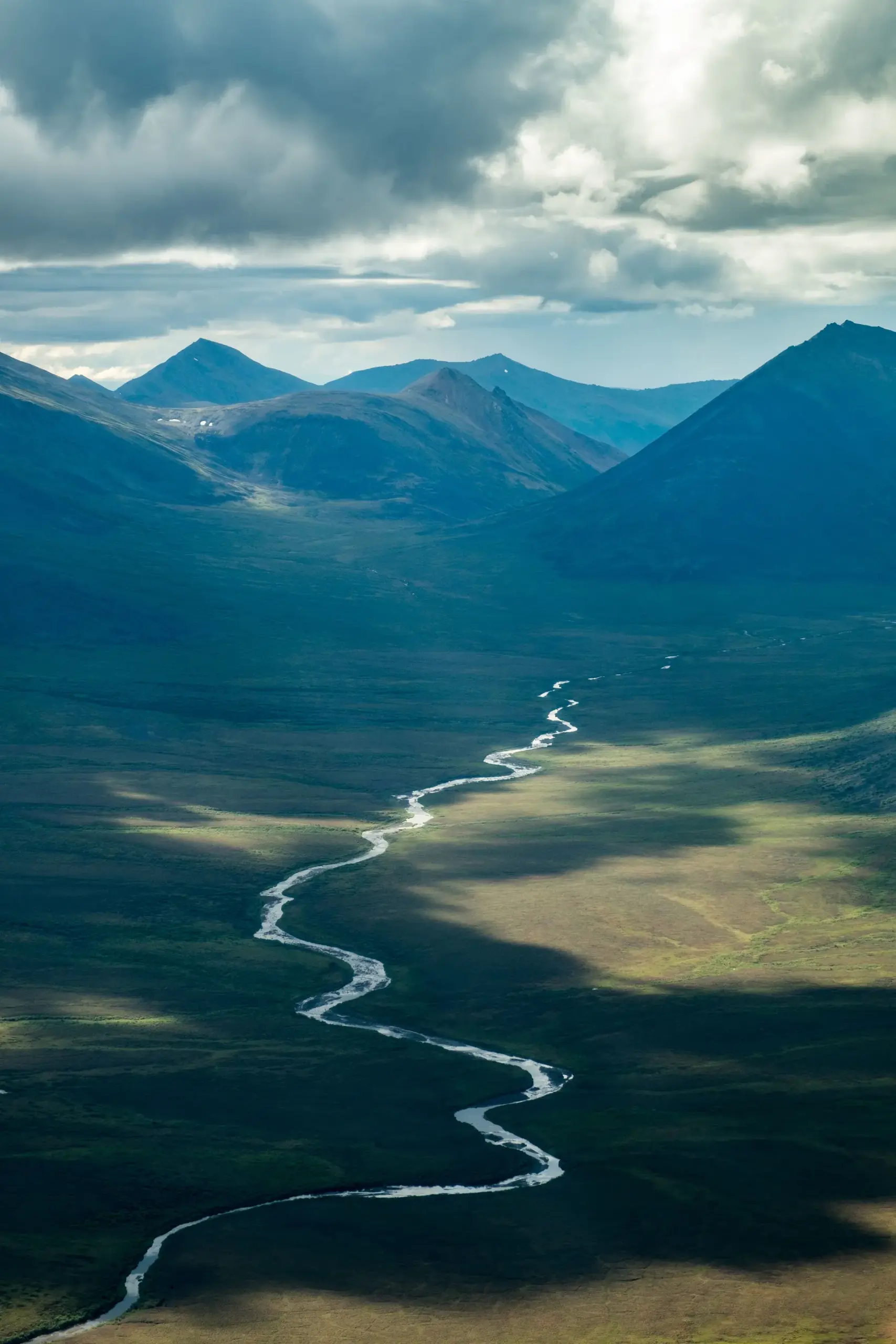
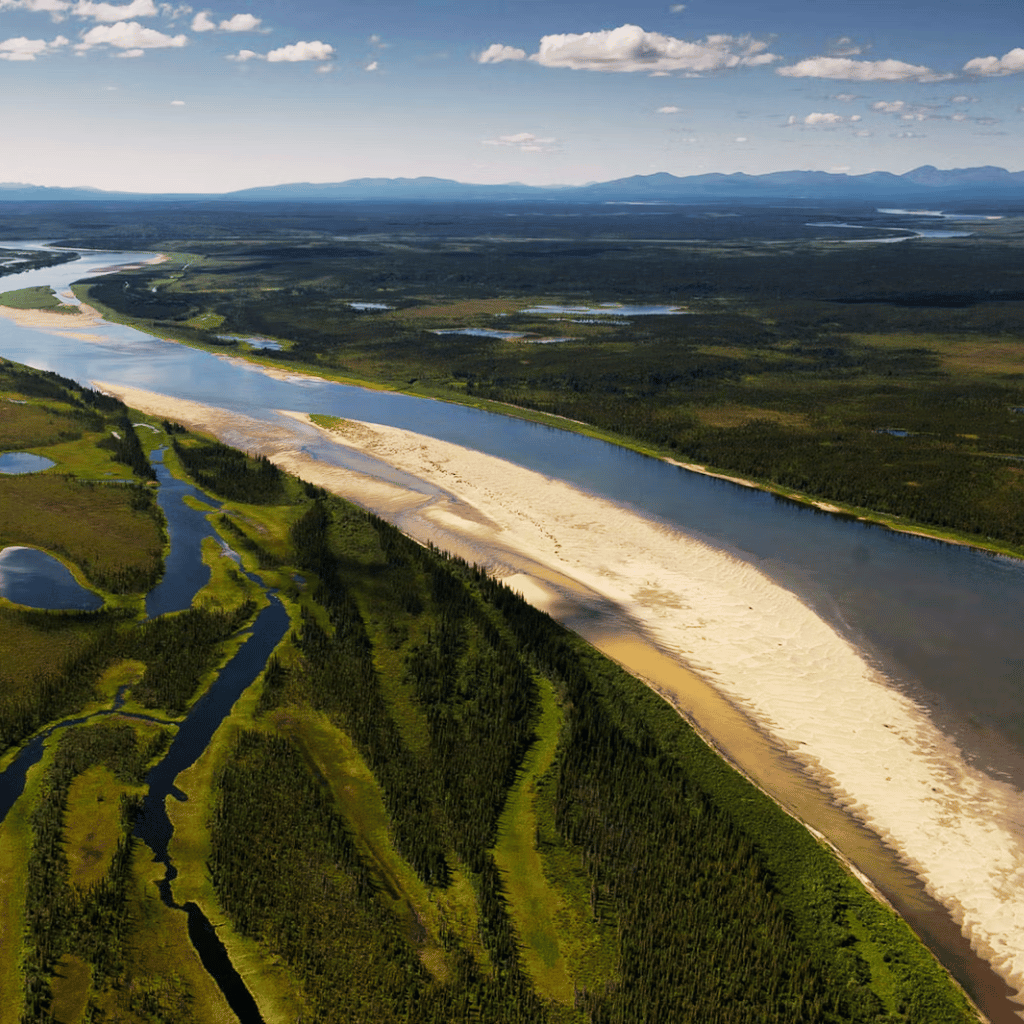
Great Sand Dunes
Visit the mesmerizing Great Kobuk Sand Dunes, where you’ll feel like you’ve stepped into a desert rather than Alaska. These dunes span 25 square miles and rise up to 100 feet high. Walking amidst this shifting sand offers a surreal experience. For a unique adventure, try sandboarding or sledding down the dunes.
Wildlife Spotting
Spot wildlife such as caribou, which migrate through the park twice a year, providing an extraordinary spectacle. Keep an eye out for bears and wolves, which roam the valley. Birdwatchers can enjoy sightings of golden eagles and loons. Pack binoculars for the best experience and remember to maintain a safe distance.
North Cascades National Park, Washington
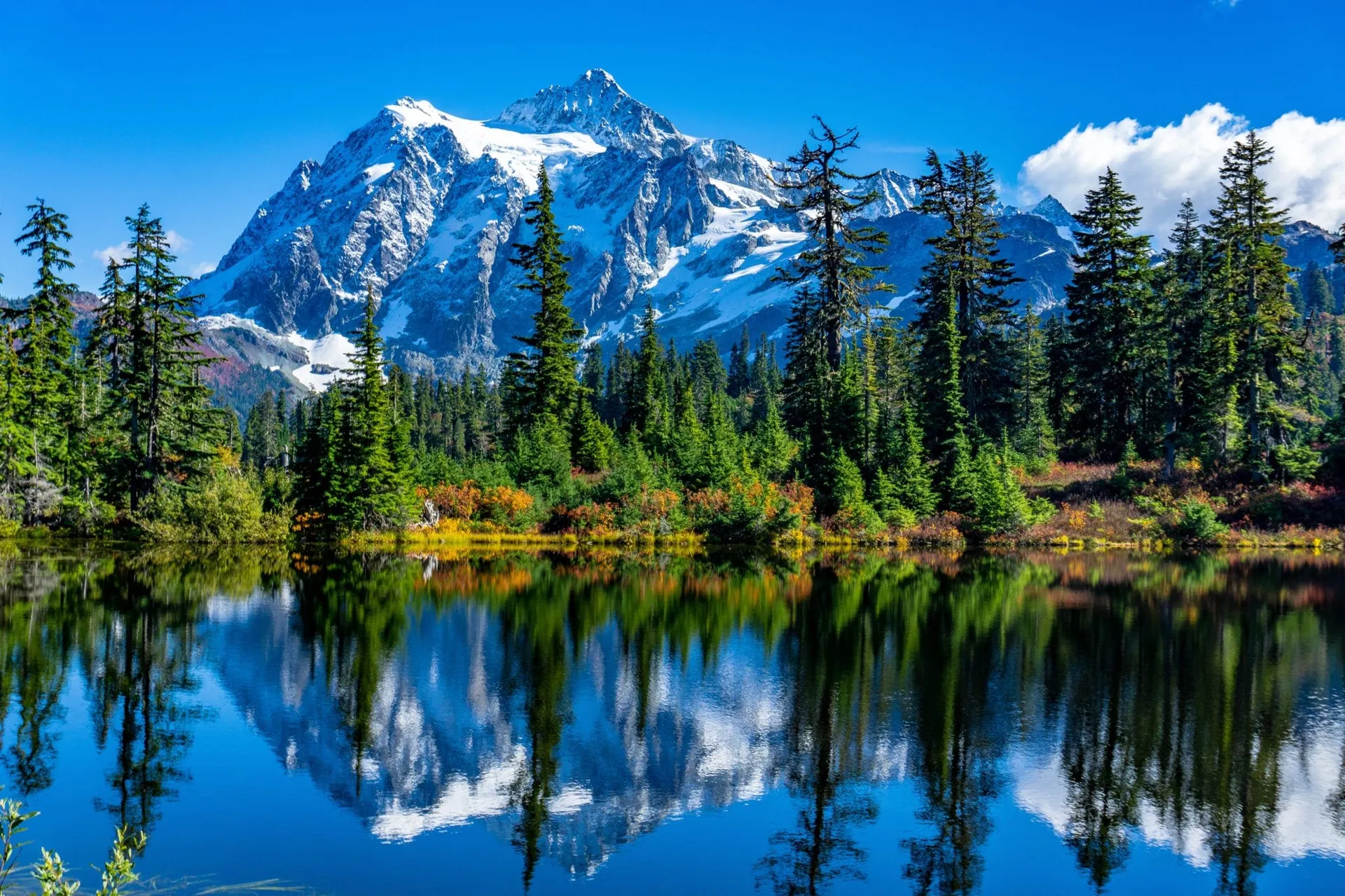
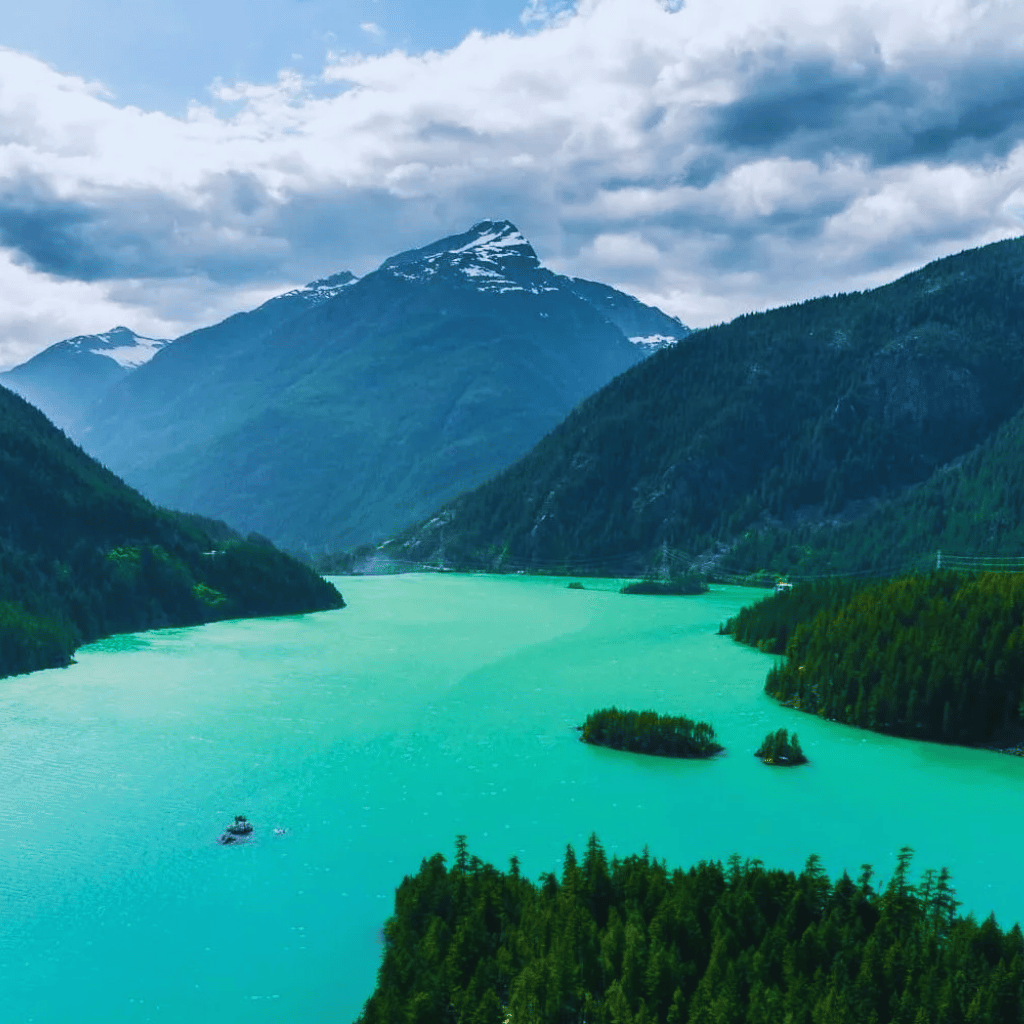
Stunning Scenic Beauty
Known as the “American Alps,” North Cascades National Park offers breathtaking landscapes reminiscent of Europe’s iconic mountain ranges. You’ll find dramatic peaks, more than 300 glaciers, and countless waterfalls. Visit in late spring to early fall for the best weather, as snow often lingers on higher trails. This park is home to over 500 lakes and ponds, each reflecting the stunning alpine surroundings. Whether you’re a photographer or simply a nature enthusiast, the vistas here won’t disappoint.
Hiking Trails
Hiking is a must in North Cascades, offering trails for all skill levels. The Cascade Pass Trail is a favorite, providing panoramic views and access to other significant routes like the Sahale Arm. For a more challenging hike, the Desolation Peak Trail offers stunning vistas that inspired author Jack Kerouac. Don’t miss the Thunder Creek Trail, which takes you along a meandering creek through lush old-growth forests. Whether you’re seeking a leisurely walk or a strenuous climb, you’ll find the perfect trail here.
Lake Clark National Park and Preserve, Alaska
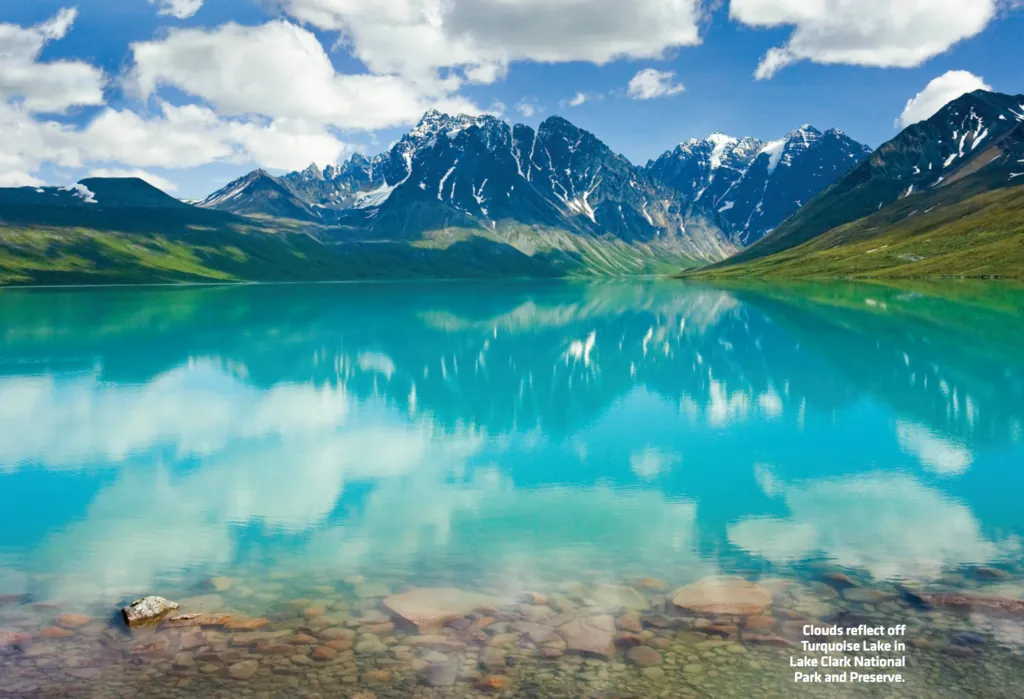
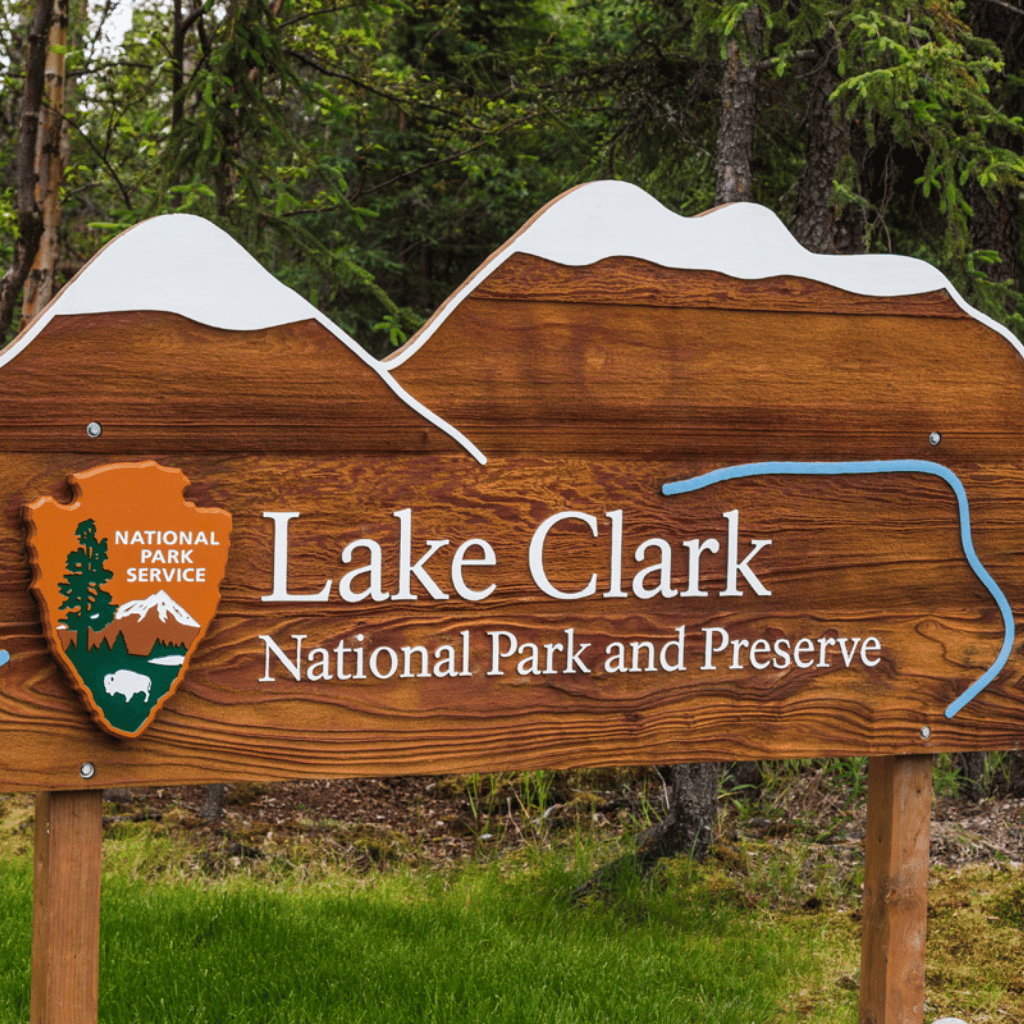
Lake Clark National Park and Preserve in Southwest Alaska is a hidden gem with only 16,728 visitors in 2023. If you’re seeking solitude among stunning backdrops, this park is for you.
Diverse Landscapes
Lake Clark boasts a variety of landscapes, from active volcanoes to sprawling tundras. The park is part of the Alaska Peninsula and includes Mount Redoubt and the Chigmit Mountains. You’ll witness glaciers, rivers, and forests, making it a dream for nature lovers. The rugged terrain offers a striking contrast with serene lakes and expansive tundra.
Activities to Enjoy
You can engage in numerous outdoor activities that promise an unforgettable adventure. Hiking and backpacking through the park’s diverse trails allow you to connect deeply with nature. If you’re into fishing, the pristine waters are ideal for catching salmon and trout. Bear viewing is another exhilarating activity, with grizzly bears frequently sighted around the park. For a unique perspective, consider flightseeing to view the stunning world from above. Wildlife like moose and Dall sheep add to the park’s allure.
Top Attractions
- Mount Redoubt: An active volcano that offers spectacular views.
- Twin Lakes: Perfect for serene moments and scenic kayaking.
- Proenneke’s Cabin: Visit the historic cabin built by naturalist Richard Proenneke.
Hidden Gems
- Turquoise Lake: A secluded spot with crystal-clear waters.
- Tuxedni Bay: Ideal for bird watching and spotting marine wildlife.
Accommodations
Here’s a quick comparison table for nearby accommodations operating from small towns and remote lodges:
| Accommodation Name | Location | Amenities | Price Range |
|---|---|---|---|
| Redoubt Mountain Lodge | Lake Clark | Guided tours, Private cabins, Meals | $$$$ |
| Silver Salmon Creek Lodge | Cook Inlet | Fishing, Wildlife tours, All-inclusive packages | $$$ |
| Alaska Homestead Lodge | Lake Clark NP | Family-friendly, Guided adventures, Meal plans | $$ |
Dining Highlights
Dining options within the park are limited, so it’s best to bring supplies. The remote lodges often offer meal packages, serving fresh, local dishes. If you’re staying in nearby towns, local eateries provide Alaskan specialties like fresh seafood and game meat.
Transportation & Practical Tips
Plan your visit between June and September, the best time due to mild weather. Access the park primarily by small aircraft from Anchorage or Homer. Be prepared for extreme weather and carry food, water, and gear. Remember, cell service is non-existent; safety gear like a satellite phone is crucial.
For a sustainable visit, adhere to Leave No Trace principles. Pack out all trash, respect wildlife, and stick to established trails to preserve the pristine environment.
Katmai National Park and Preserve, Alaska
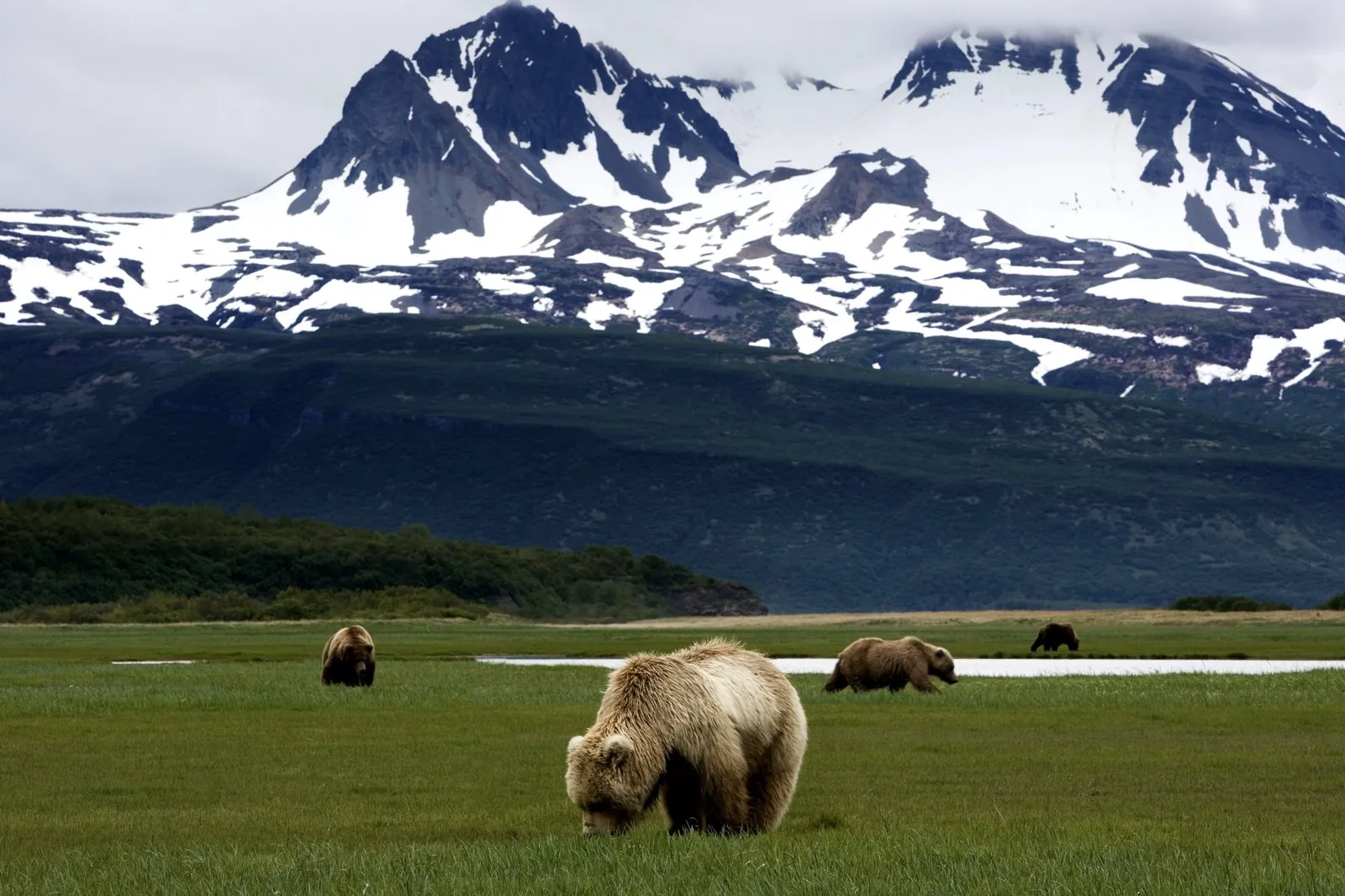
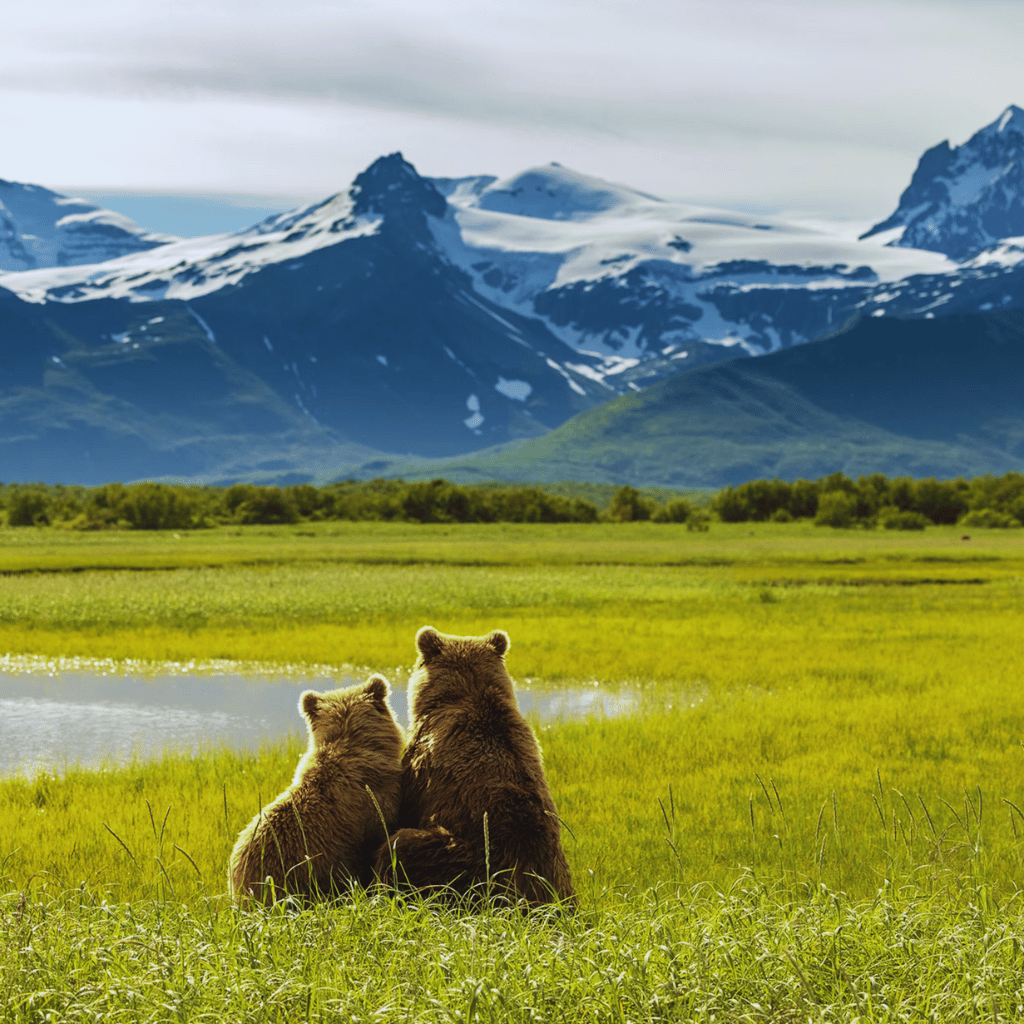
Described as one of Alaska’s crown jewels, Katmai National Park and Preserve is a haven for nature lovers and wildlife enthusiasts. Famous for its stunning landscapes and abundant bear population, this park offers a unique adventure without the crowds.
Bear Viewing Attractions
- Brooks Falls: The most iconic location for bear watching, Brooks Falls allows you to witness brown bears catching salmon mid-air. The best viewing times are late June through July and September.
- Hallo Bay: Offers incredible bear viewing experiences on the coast. The area is known for its grassy meadows and tidal flats where bears forage.
- Moraine Creek: Another top spot for bear viewing, especially during the salmon runs. This location offers a more secluded experience compared to Brooks Falls.
- Geographic Harbor: Known for its stunning scenery and diverse wildlife. Besides bears, you might spot sea otters and bald eagles.
Outdoor Adventures
- Backcountry Hiking: Explore pristine wilderness on foot with trails that range from easy day hikes to challenging multi-day treks. Key routes include the Valley of Ten Thousand Smokes and the Savonoski Loop.
- Fishing: Katmai is a fisher’s paradise with abundant salmon and trout. Top spots include Brooks River and American Creek.
- Kayaking and Canoeing: Paddle among icebergs and along dramatic coastlines. Naknek Lake and Margot Creek offer serene waters for boating adventures.
- Wildlife Photography: Capture the park’s diverse wildlife, from brown bears to moose, while enjoying world photography opportunities unique to the region.
Accommodations
| Type | Location | Amenities | Price Range |
|---|---|---|---|
| Brooks Lodge | Near Brooks Falls | Guided tours, meals, rustic cabins | $$ |
| Kulik Lodge | Naknek Lake | All-inclusive packages, fishing trips | $$$ |
| Camping | Various Locations | Permits required, basic facilities | $ |
Dining Highlights
- Brooks Lodge Dining Hall: Offers hearty meals with a focus on comfort food. Perfect for loading up before a day of exploration.
- Kulik Lodge Dining Room: Serves gourmet meals as part of their all-inclusive packages, featuring fresh Alaskan seafood and local produce.
- Access: Primarily by floatplane from King Salmon. Small aircraft are the main mode of transportation within the park.
- Best Time to Visit: Late June to mid-September for bear viewing and better weather.
- Safety Tips: Carry bear spray, make noise while hiking to avoid surprise encounters, and always store food securely.
- Sustainability: Pack out all trash, follow Leave No Trace principles, and support local conservation efforts by respecting wildlife and habitats.
Katmai National Park and Preserve offers an immersive wilderness experience filled with rare opportunities to witness iconic wildlife and dramatic landscapes. Whether you’re a seasoned adventurer or a casual traveler, this park promises unforgettable memories in a truly remote setting.
Isle Royale National Park, Michigan
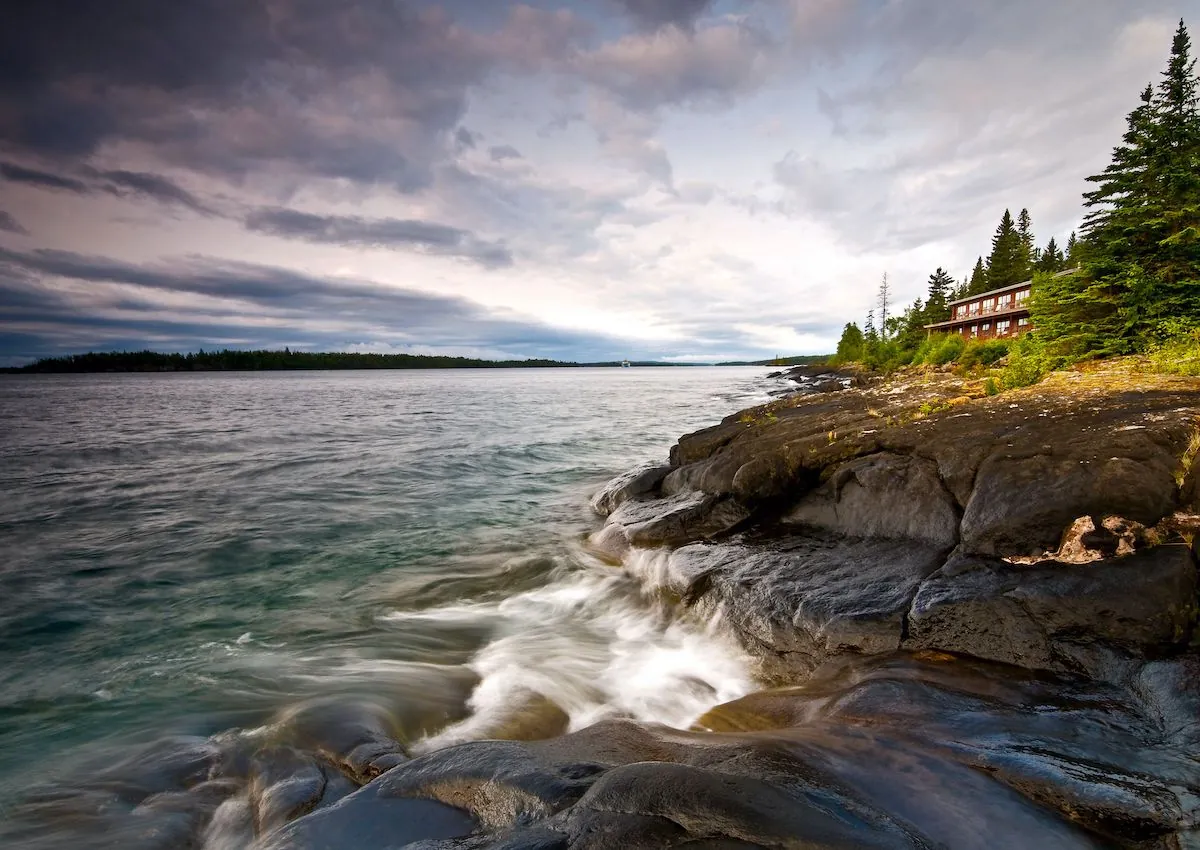
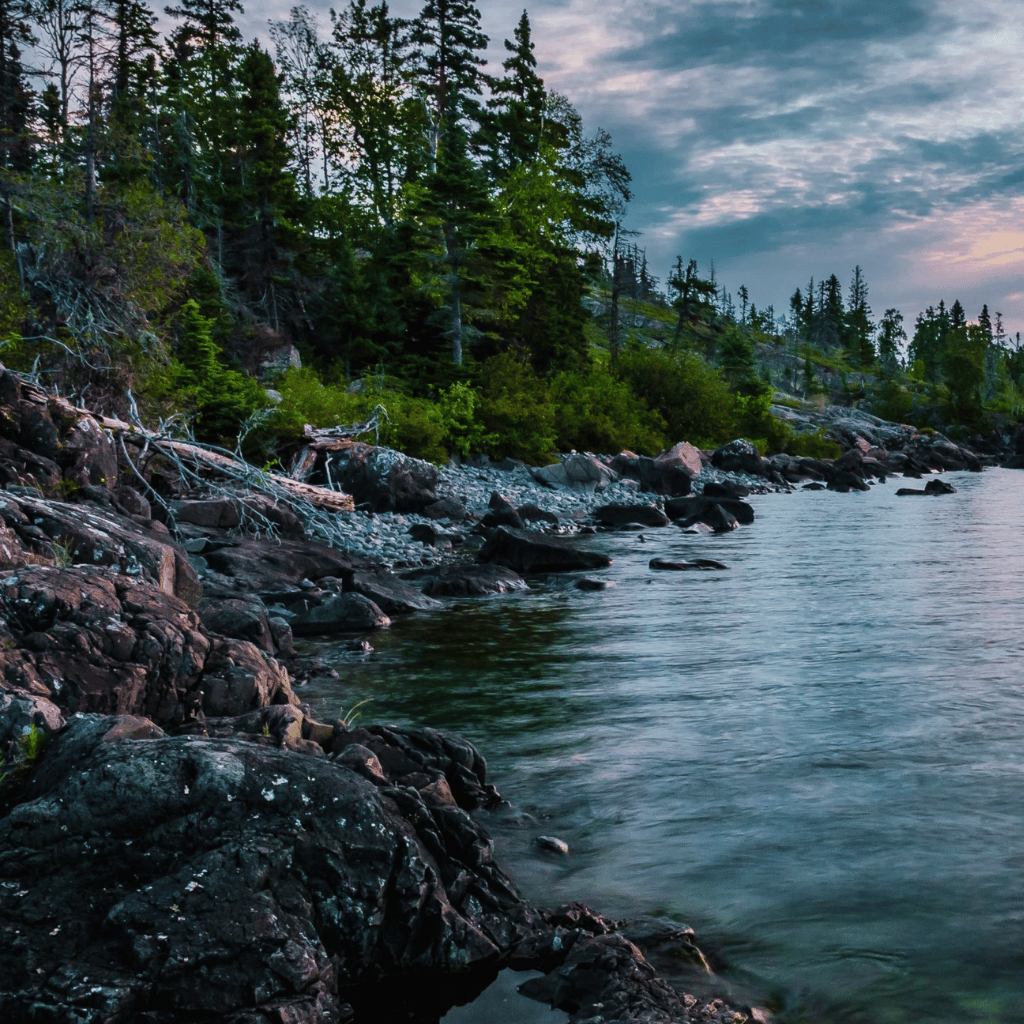
Remote Wilderness
Isle Royale National Park promises rugged beauty and solitude in Lake Superior. With only about 19,000 visitors annually, it’s a hidden gem for wilderness seekers. The island’s boreal forests, rocky shores, and serene inland lakes create a remote sanctuary for backpackers and nature enthusiasts. Summer offers milder weather and accessible trails, while autumn displays stunning foliage.
Water Activities
Being an island, Isle Royale is a haven for water activities. Kayaking and canoeing let you explore its intricate waterways, while scuba diving reveals shipwrecks from the 19th century. Anglers will enjoy fishing for lake trout and northern pike. Whether you’re paddling through hidden coves or diving into the crystal-clear waters, the aquatic adventures are unparalleled.
Top Attractions
- Minong Ridge Trail: A challenging hike with panoramic views.
- Rock Harbor Lighthouse: Historical site with scenic surroundings.
- Tobin Harbor: Ideal for kayaking and peaceful exploration.
Hidden Gems
Seek out Wildlife at Daisy Farm Campground, where moose sightings are common. Lane Cove is another secluded spot perfect for a quiet retreat.
Accommodations
Isle Royale offers various lodging options, from rustic campsites to comfortable lodges.
| Accommodation | Type | Amenities | Price Range |
|---|---|---|---|
| Rock Harbor Lodge | Lodge | Modern conveniences, lake views | $$$ |
| Windigo Camper Cabins | Cabin | Simple, no-frills lodging, near trails | $$ |
| Several Campgrounds | Campsite | Basic facilities, waterfront sites | $ |
Dining Highlights
Dining options are limited but noteworthy. The Rock Harbor Lodge serves hearty meals with local flavors. Bringing your own food supplies is advisable, and lightweight, non-perishable items are best.
Transportation & Practical Tips
Access Isle Royale via ferry, sea plane, or private boat. Plan your transport ahead, especially in peak summer months. Pack essentials, as commercial facilities are sparse. Weather can change rapidly, so layered clothing is recommended.
With its remote beauty and diverse activities, Isle Royale National Park offers an unforgettable adventure for seasoned travelers and wilderness novices alike.
Wrangell-St. Elias National Park and Preserve, Alaska
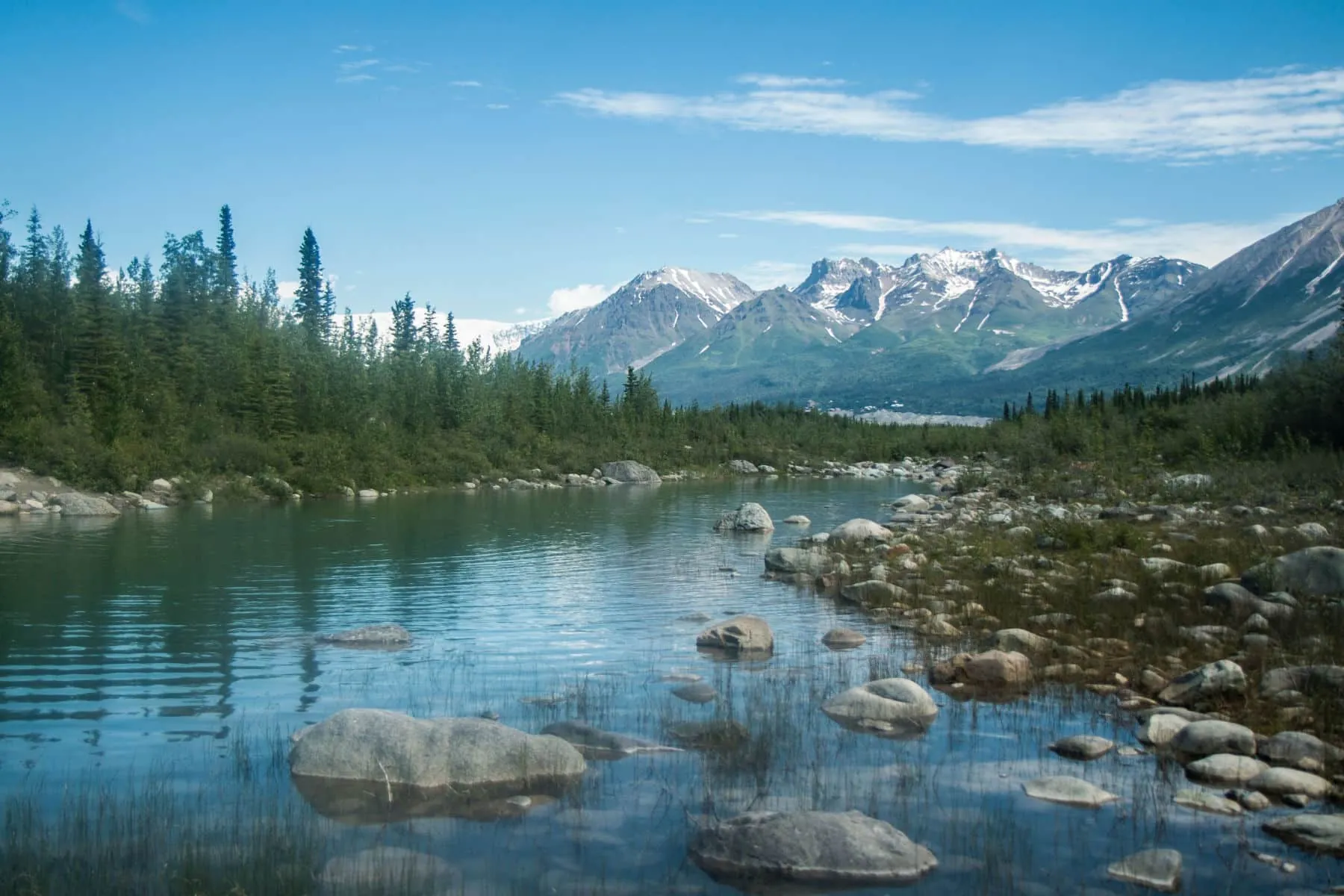
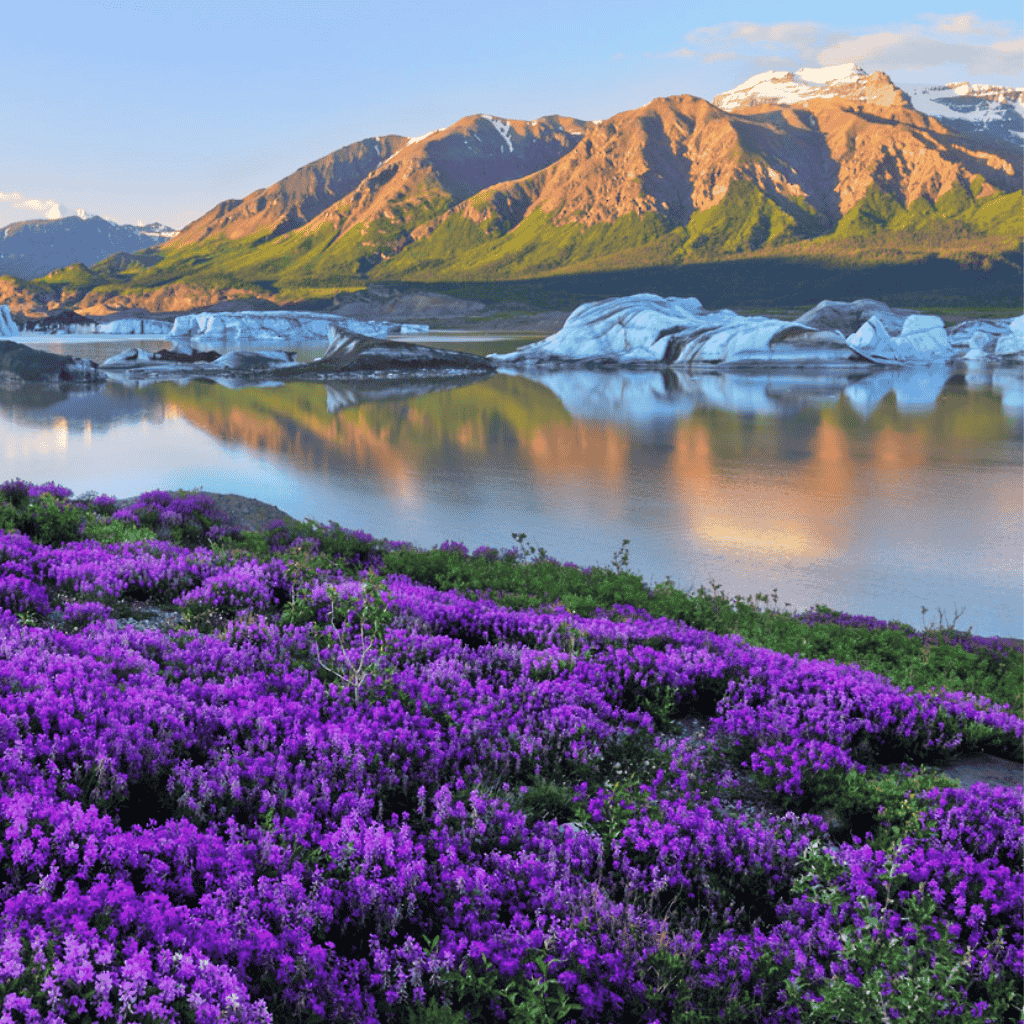
If you’re searching for a vast, untouched wilderness to explore, look no further than Wrangell-St. Elias National Park and Preserve in Alaska. As the largest national park in the United States, it offers sweeping vistas, rugged mountains, and an unparalleled sense of seclusion.
Largest National Park
Wrangell-St. Elias National Park spans over 13 million acres, making it larger than Switzerland. The park includes the convergence of the Chugach, Wrangell, and St. Elias mountain ranges, creating breathtaking landscapes with some of the continent’s highest peaks. The park’s diverse climates range from coastal rainforests to alpine tundra, offering something for every adventurer.
Outdoor Explorations
With endless opportunities for outdoor activities, you can experience everything from mountaineering to glacier trekking. Popular attractions include:
- Mount St. Elias: The second-highest peak in the U.S., offering challenging climbs.
- Nabesna Road: A scenic drive providing access to various hiking and wildlife watching spots.
- Root Glacier: Perfect for guided ice climbing and glacier tours.
- Kennicott Ghost Town: Explore historic mining ruins amidst stunning backdrops.
Hidden Gems
Discover lesser-known treasures such as the Stairway Icefall, one of the world’s tallest icefalls, or view the park’s lush world from the comfort of a bush plane tour. Don’t miss the hidden beauty of the Wrangell Volcanic Field, featuring active geological marvels.
Accommodations
Accommodation options cater to various preferences and budget considerations. Here’s a quick comparison:
| Lodging Type | Options | Price Range | Features |
|---|---|---|---|
| Campgrounds | Free dispersed camping | Free | Basic amenities, stunning natural settings |
| Rustic Cabins | Public use cabins | $25-$60 | Remote locations, basic facilities |
| Lodges | McCarthy Lodge, Kennicott | $150-$300+ | Comfortable rooms, close to key sights |
Dining Highlights
Dining within the park is limited, so it’s wise to pack plenty of supplies. McCarthy and Kennicott offer a few eateries, including:
- Golden Saloon: Enjoy hearty Alaskan fare in a rustic setting.
- Kennicott Glacier Lodge Restaurant: Savor home-cooked meals with a panoramic view of Root Glacier.
Transportation & Practical Tips
Getting to Wrangell-St. Elias requires careful planning. Access is primarily via small aircraft or long drives on unpaved roads like the Nabesna and McCarthy Roads. Here are some practical tips:
- Best Time to Visit: May through September for optimal weather.
- Clothing: Dress in layers to adapt to changing conditions.
- Guided Tours: Highly recommended for safely exploring remote areas.
- Sustainability: Practice Leave No Trace principles to protect the pristine environment.
Begin on a unique Alaskan adventure in Wrangell-St. Elias National Park, where the sheer scale and unspoiled beauty promise an unforgettable wilderness experience.
Dry Tortugas National Park, Florida
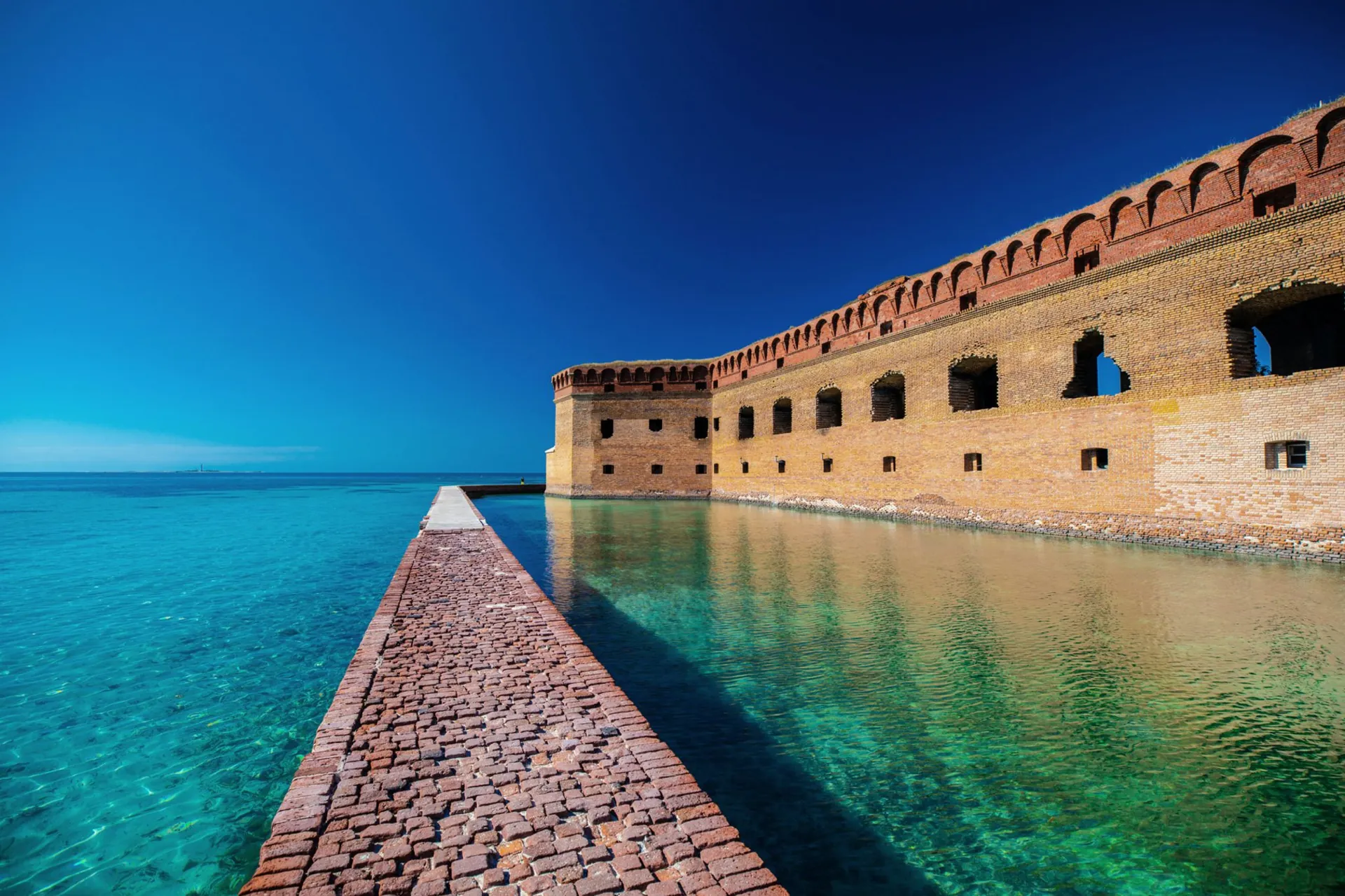

Located in the Gulf of Mexico, Dry Tortugas National Park offers a unique escape from the hustle and bustle of crowded tourist destinations. This remote park is only accessible by boat or seaplane, making it an exclusive haven for adventure seekers and history buffs alike.
Historic Fort Jefferson
Fort Jefferson is the crown jewel of Dry Tortugas. Built in the 19th century, it’s one of the largest masonry forts in the Western Hemisphere. You can explore its massive brick walls, internal corridors, and scenic rooftop, taking in breathtaking ocean views. Visiting the fort provides a fascinating glimpse into American military history and the strategic significance of the Gulf of Mexico.
Snorkeling and Diving
Dry Tortugas boasts some of the clearest waters and vibrant coral reefs in Florida, perfect for snorkeling and diving enthusiasts. You’ll find an underwater wonderland teeming with colorful marine life, including tropical fish, corals, and even shipwrecks. Don’t forget to bring your snorkeling gear or rent equipment at local shops to experience the rich aquatic biodiversity just beneath the surface.
Top Attractions
- Garden Key: Home to Fort Jefferson and stunning beaches, it’s the main hub for activities.
- Loggerhead Key: Offers a lighthouse and great spots for snorkeling and birdwatching.
- Bush Key: A sanctuary for bird nesting, it’s closed to visitors during the nesting season but offers excellent viewing from nearby.
Hidden Gems
- Windjammer Wreck: An underwater shipwreck site perfect for seasoned divers.
- Hospital Key: A small, serene island ideal for a quiet, solitary escape.
Accommodations
While Dry Tortugas has no in-park accommodations, nearby options in Key West provide a comfortable resting place before or after your visit.
| Accommodation | Type | Distance to Ferry | Price Range |
|---|---|---|---|
| NYAH Key West | Shared Rooms | 1 mile | $120 – $200 |
| Southernmost House | Bed & Breakfast | 0.5 mile | $250 – $400 |
| Margaritaville Resort | Hotel | 0.7 mile | $300 – $550 |
Dining Highlights
Dining options are nonexistent at Dry Tortugas, so pack a picnic or grab a meal before heading out. Key West, the nearest urban hub, offers eclectic eats ranging from fresh seafood shacks to gourmet dining experiences.
- Access: Only by boat or seaplane from Key West.
- Best Time to Visit: Between November and April for cooler, drier weather.
- Packing: Bring sun protection, plenty of water, snacks, and personal snorkeling gear if you have it.
- Sustainability: Practice Leave No Trace principles by packing out all trash and minimizing your impact on the pristine environment.
A visit to Dry Tortugas National Park promises a blend of history, adventure, and natural beauty that’s hard to find anywhere else.
Great Basin National Park, Nevada
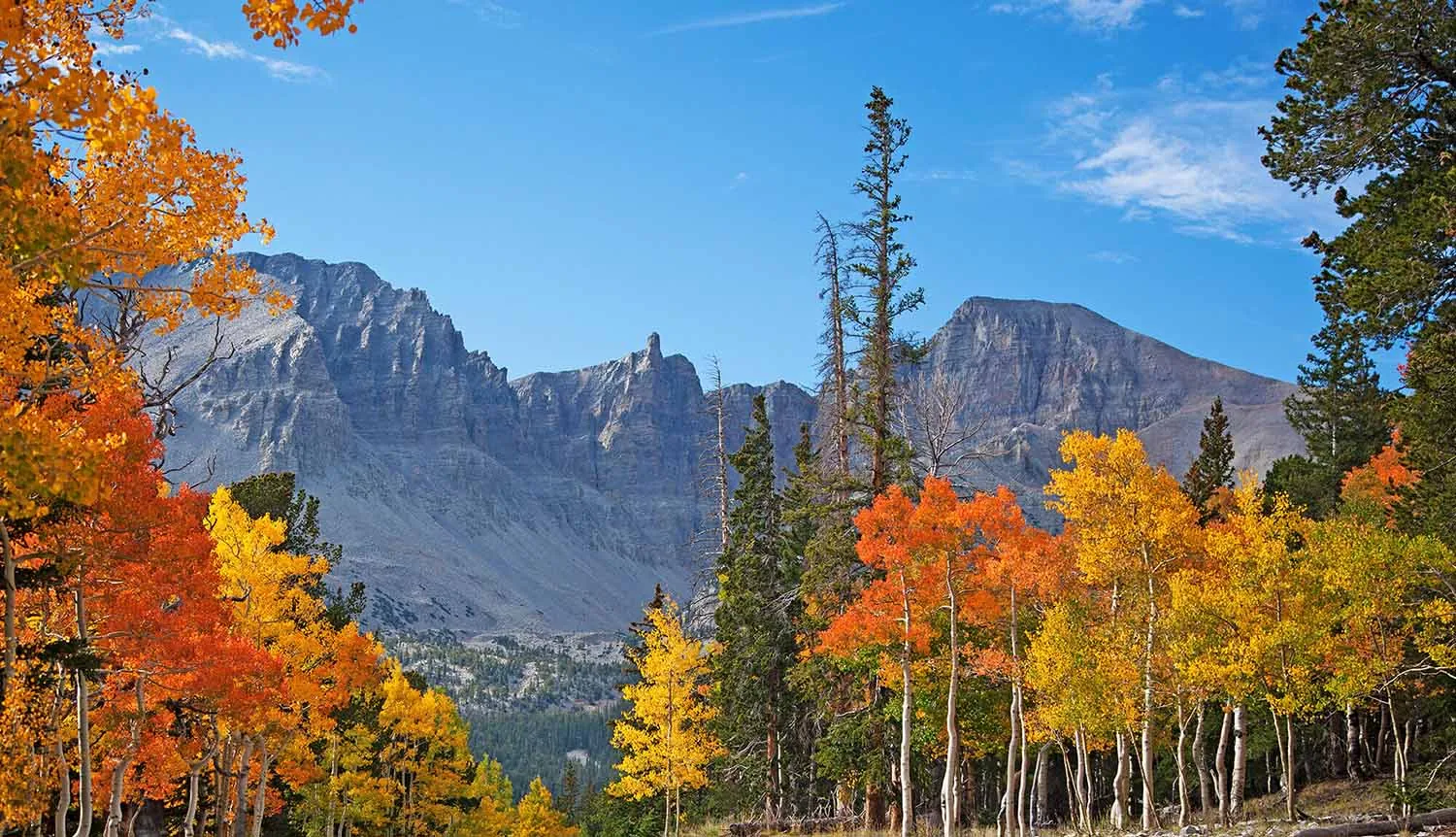
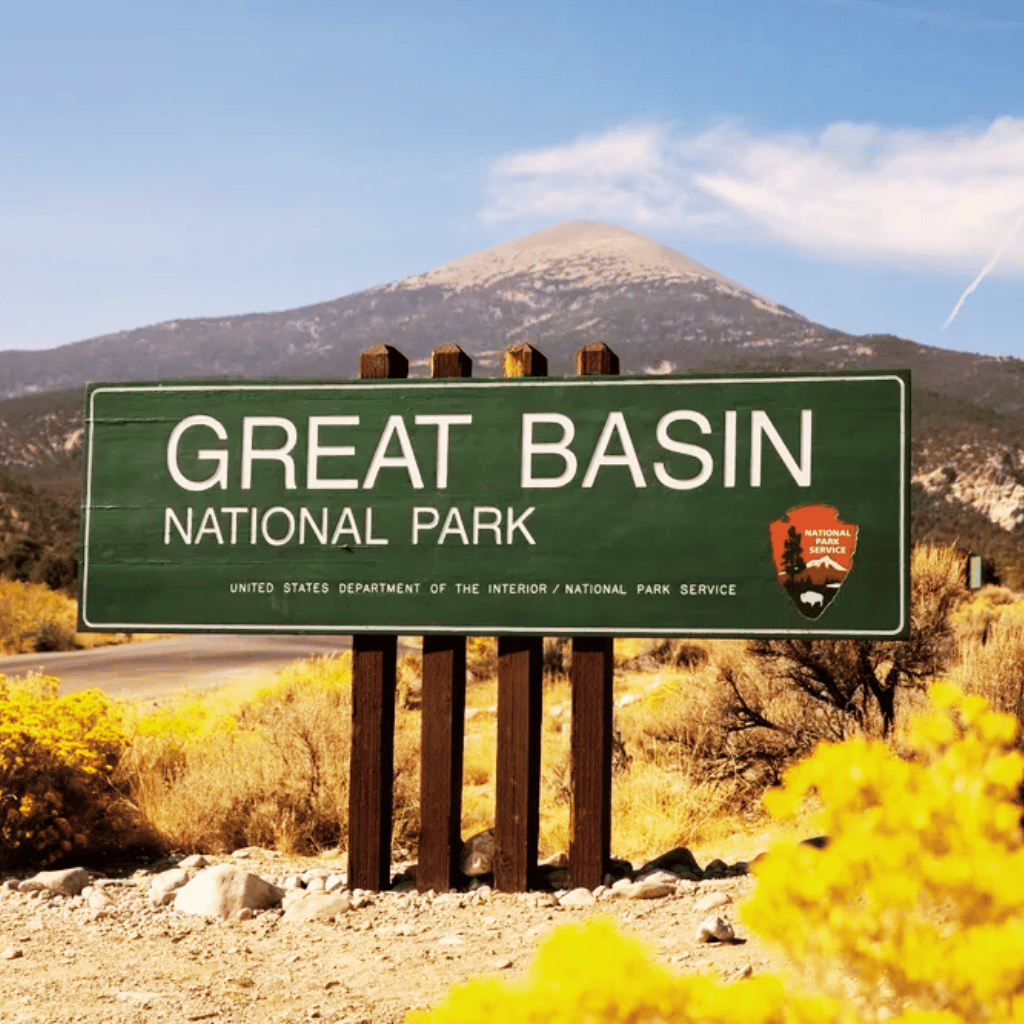
Nestled in the heart of eastern Nevada, Great Basin National Park is a haven for those seeking solitude and natural splendor. With just 143,265 visitors in 2023, this park offers a tranquil retreat from the usual crowds. Known for its ancient bristlecone pines, Lehman Caves, and the stunning Wheeler Peak, Great Basin promises a unique adventure for diverse travelers.
Stargazing Opportunities
Great Basin National Park is a premier destination for stargazing. The park’s remote location ensures exceptionally dark skies, perfect for astronomy enthusiasts. On a clear night, you can see countless stars, meteor showers, and even the Milky Way with the naked eye. The park regularly hosts astronomy events and programs, allowing you to learn about the cosmos from knowledgeable rangers. Bring a telescope or simply lie back and marvel at the celestial display above.
Lehman Caves
Lehman Caves is one of the park’s most captivating attractions. This limestone cave system features stunning formations, including stalactites, stalagmites, and the rare “shield” formations. Guided tours are available, offering insights into the geological wonders and historical significance of the caves. Be sure to book in advance, as spots fill up quickly. Inside the cool, dimly lit caverns, you’ll feel like you’ve stepped into another world, one shaped over millions of years by the slow drip of mineral-rich water.
Top Attractions
- Wheeler Peak: At over 13,000 feet, Wheeler Peak provides breathtaking vistas and challenging hiking trails.
- Bristlecone Pine Groves: Home to some of the oldest trees in the world, these groves offer a chance to connect with ancient natural history.
- Baker Creek: A serene spot for fishing and picnicking, surrounded by lush greenery and the sound of flowing water.
Hidden Gems
- Glacier Trail: A lesser-known hike that takes you to a small glacier near Wheeler Peak, offering stunning views and a sense of accomplishment.
- Baker Archeological Site: Discover ancient ruins and artifacts that tell the story of early Native American inhabitants.
Accommodations
| Accommodation | Type | Price Range ($) | Amenities | Best For |
|---|---|---|---|---|
| Lower Lehman Creek Campground | Campground | 15-30 | Potable water, restrooms | Budget travelers |
| Whispering Elms Motel & RV Park | Motel/RV Park | 50-100 | Free Wi-Fi, laundry services, showers | Families and RV travelers |
| Stargazer Inn | Small Hotel | 100-150 | Restaurant, bar, pet-friendly | Couples and pet owners |
Dining Highlights
- Kerouac’s Restaurant: Located at Stargazer Inn, offering gourmet meals with a focus on local ingredients and seasonal produce.
- Lehman Caves Café: Perfect for a quick bite before or after your cave tour, featuring sandwiches, salads, and local treats.
- Whispering Elms Bar: Enjoy a drink and local ambiance after a day of exploring the park.
Transportation & Practical Tips
The best way to get to Great Basin National Park is by car. The park has several access points with parking available. Plan your visit between May and October for mild weather and accessible trails.
- Bring plenty of water and snacks, as facilities are limited.
- Dress in layers, as temperatures can vary widely within a single day.
- Practice sustainability by carrying out all trash and using designated restrooms.
Great Basin National Park promises an adventurous and serene escape. Whether you’re stargazing or exploring Lehman Caves, you’ll find endless wonder in this lesser-known gem.
Congaree National Park, South Carolina
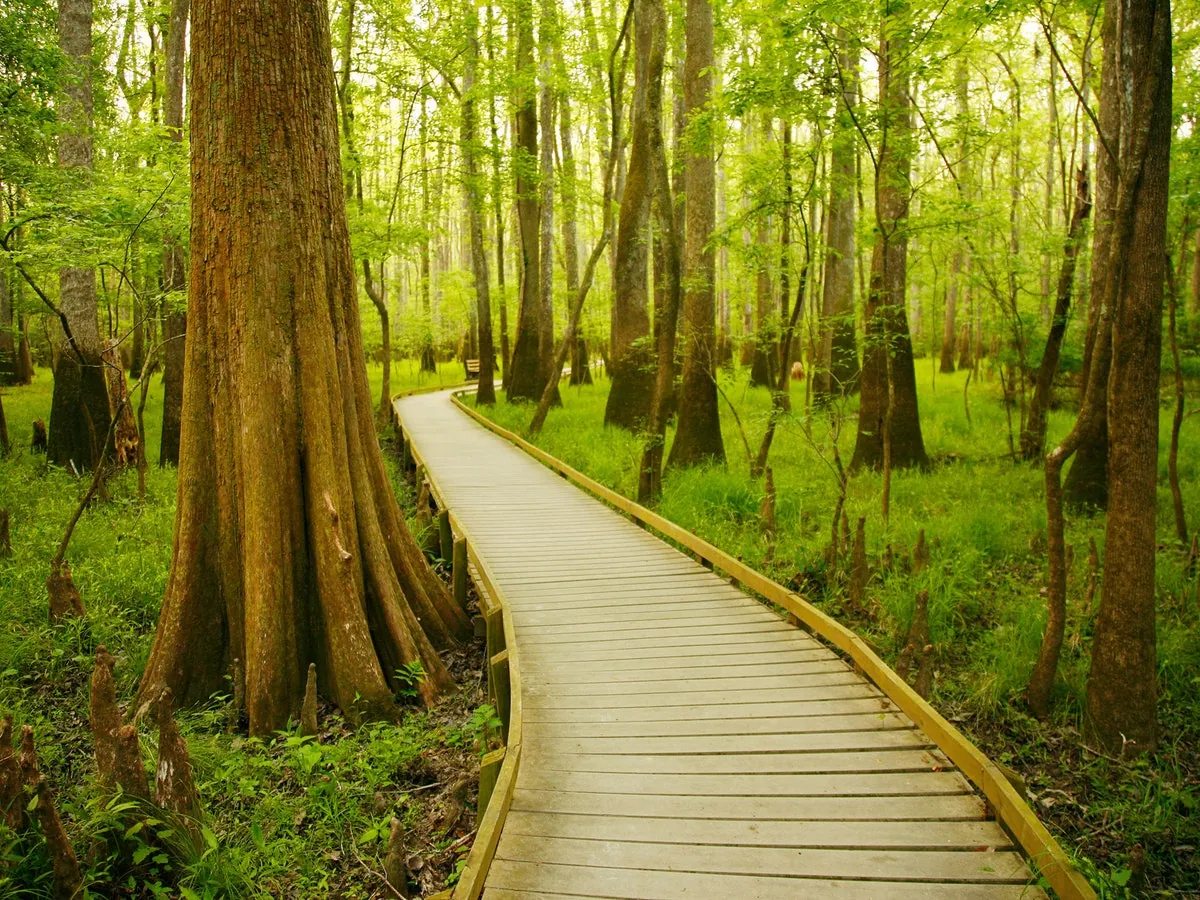
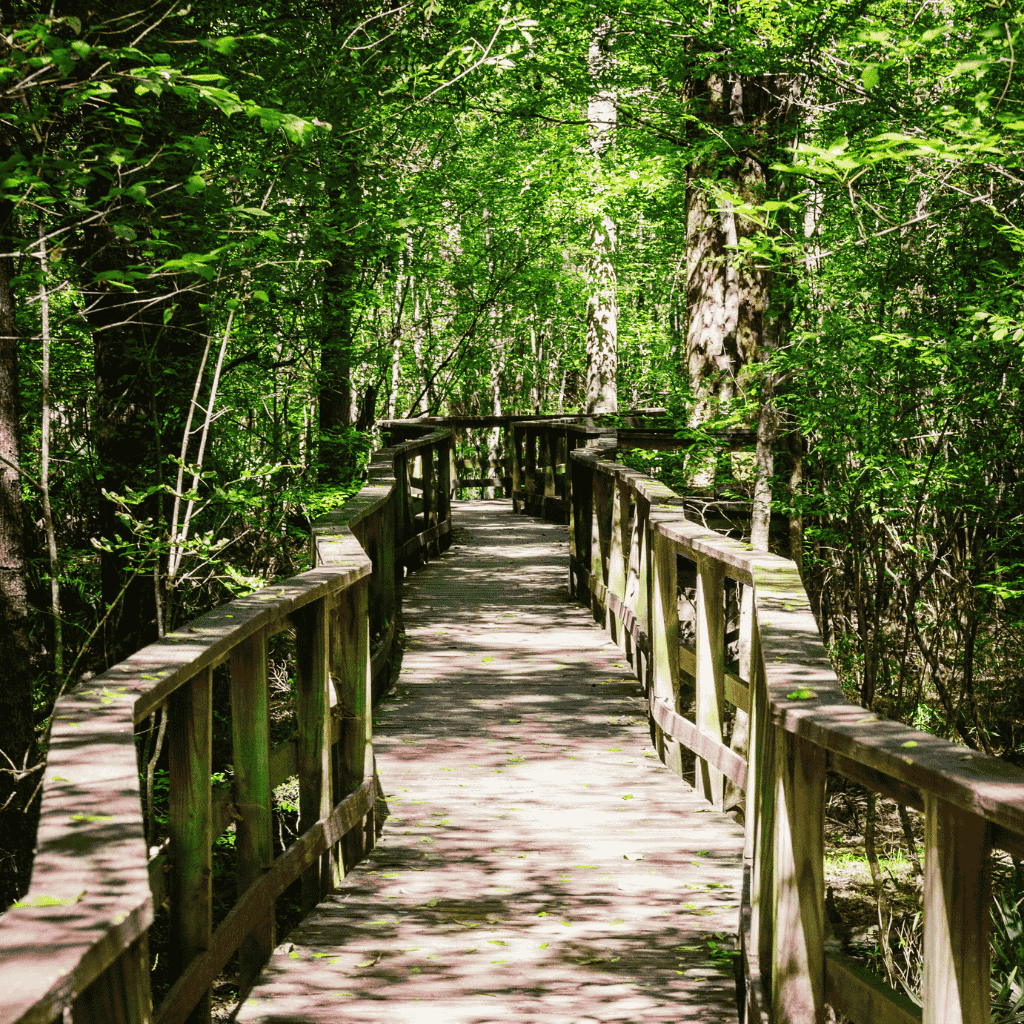
Congaree National Park in South Carolina is a haven for nature lovers seeking tranquility. Nestled along the Congaree River, this park boasts the largest intact expanse of old-growth bottomland hardwood forest in the southeastern United States. It’s best visited in the cooler months, from October to March, to fully appreciate its lush landscapes and abundant wildlife.
Old-Growth Forests
Explore ancient trees. Wander through towering bald cypress and water tupelo, some over 500 years old, creating a cathedral-like canopy. Don’t miss the Boardwalk Loop Trail, a 2.4-mile elevated walkway that meanders through the heart of this pristine wilderness, ideal for both seasoned hikers and casual walkers. These forests, rich with biodiversity, offer glimpses of bobcats, river otters, and over 200 bird species, making every visit a unique experience.
Kayaking and Canoeing
Paddle through serene waterways. Experience the park’s beauty from Cedar Creek, a popular route for kayaking and canoeing. These quiet adventures allow you to navigate through picturesque swamps and under ancient trees, spotting wildlife along the way. Outfitters in the area offer rentals and guided tours, catering to all skill levels. It’s the perfect way to immerse yourself in Congaree’s untouched ecosystems while enjoying a peaceful escape from the everyday hustle.
Top Attractions
- Boardwalk Loop Trail: An elevated, accessible path through diverse ecosystems.
- Weston Lake Loop Trail: A 4.4-mile trail around a mysterious oxbow lake.
- Kingsnake Trail: A more challenging 8-mile trek for avid hikers.
Hidden Gems
- Bluff Campground: More secluded than the main campground, offering quiet, rustic camping experiences.
- Bates Ferry Trail: A seldom-visited path through serene hardwood forests leading to the historic Bates Ferry.
Accommodations
| Accommodation | Type | Amenities | Price Range (per night) |
|---|---|---|---|
| Bluff Campground | Campsite | Basic, primitive | $10 – $15 |
| Longleaf Campground | Campsite | Restrooms, picnic tables | $15 – $20 |
| Nearby Lodging (Columbia) | Hotel/Motel | Full amenities, family-friendly | $80 – $150 |
Dining Highlights
Locally sourced. Enjoy Southern cuisine at nearby Columbia, just 20 miles away. Must-try spots include Gervais & Vine for tapas, and Motor Supply Co. Bistro, known for farm-to-table dishes. Pack a picnic for day-trips, as dining options within the park are limited.
- Getting There: Fly into Columbia Metropolitan Airport (CAE) or drive directly; highways I-26 and I-77 provide easy access.
- Best Time to Visit: October to March for cooler weather and fewer mosquitoes.
- Pack Essentials: Bring bug spray, sunscreen, and plenty of water. Wear sturdy hiking boots and dress in layers.
- Sustainability Tips: Use Leave No Trace principles. Dispose of trash properly, stay on designated trails, and avoid disturbing wildlife.
Congaree National Park offers an idyllic escape with countless opportunities for exploration and reflection. Embrace the peace and beauty of this untouched natural gem and make lasting memories amid its ancient trees and tranquil waterways.
Voyageurs National Park, Minnesota
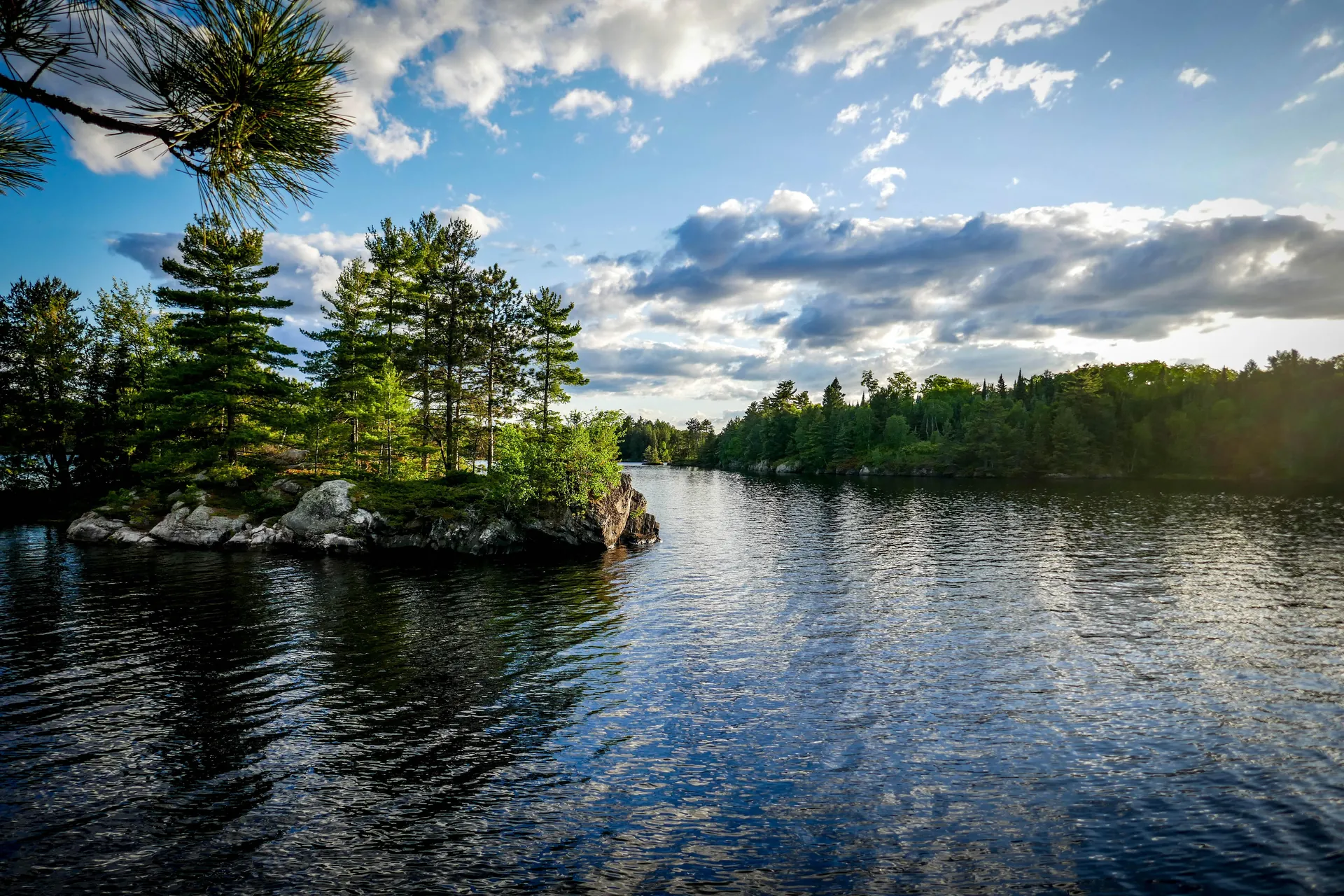
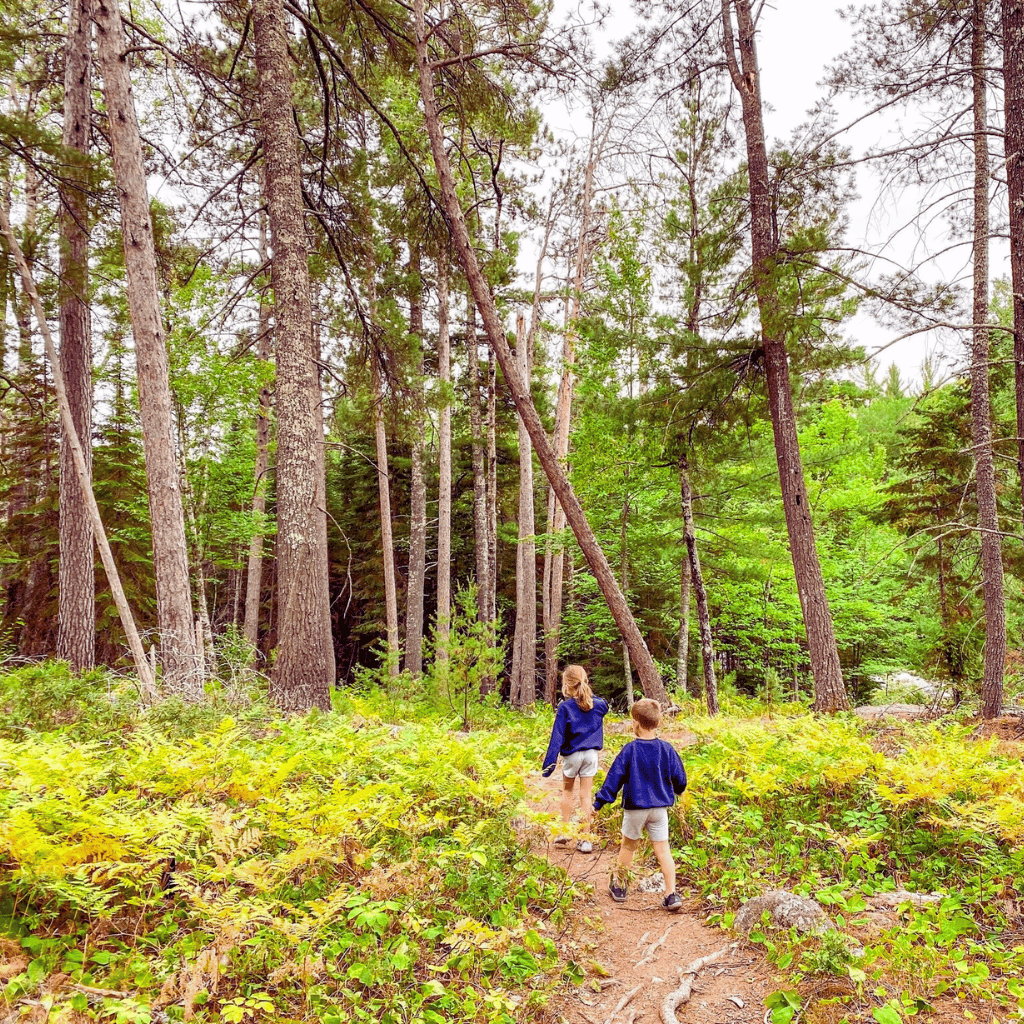
Water-Based Recreation
Voyageurs National Park offers over 218,000 acres of water, making it a paradise for aquatic adventurers. You can kayak through secluded bays, canoe tranquil lakes, or explore over 30 miles of interconnected waterways on a motorboat. Fishing enthusiasts will find abundant walleye, northern pike, and smallmouth bass in the park’s pristine lakes. Don’t miss Kabetogama Lake for its scenic beauty and fishing potential. For a unique experience, navigate Rainy Lake’s historic waterways, where you might glimpse a bald eagle soaring overhead.
Camping Spots
Voyageurs provides various camping options catering to different comfort levels. If you prefer a rustic experience, over 270 campsites are accessible only by watercraft, ensuring a private and serene environment. Recommended spots include Kettle Falls Campground, renowned for its solitude and lakeside views, and Backcountry Camping for a more adventurous experience. For those seeking more amenities, consider the established campsites at Ash River. All campgrounds come equipped with fire rings and picnic tables. Remember to bring your own water or a filtration system, as potable water is limited.
Top Attractions
- Ellsworth Rock Gardens: Known as the “Showplace of Lake Kabetogama,” these gardens feature over 200 unique rock sculptures.
- Kabetogama Peninsula: Offers diverse wildlife and numerous hiking trails.
- Voyageurs Forest Overlooks: Provides breathtaking panoramic views of the park’s vast water network and dense forests.
Hidden Gems
- Anderson Bay: Perfect for kayaking with its dramatic cliffs and secluded beaches.
- Hoist Bay Camp: A historic logging camp with interpretive signs detailing its history.
- Gold Portage: A serene spot ideal for birdwatching and photography.
Accommodations
Comparing accommodations helps you plan your stay effectively:
| Accommodation Type | Key Features | Price Range (per night) |
|---|---|---|
| Houseboats | Floating lodging, fully equipped | $300 – $1,200 |
| Camping | Primitive to developed campsites | $10 – $35 |
| Lodges | Comfortable lodging with amenities | $100 – $250 |
| Cabins | Rustic cabins, often near the water | $70 – $200 |
Dining Highlights
While dining options within the park are sparse, nearby towns like International Falls offer a variety of restaurants. From hearty breakfasts at Coffee Landing Cafe to local favorites like Sha Sha Resort, you’ll find delicious options to suit every taste. For a truly local experience, try wild rice dishes unique to the area.
Transportation & Practical Tips
Reaching Voyageurs requires some planning. The nearest airport is Falls International Airport. From there, you can rent a car or arrange a shuttle to the park. Once inside, boats are the best way to navigate the park, with rentals available at several entry points. Here are some practical tips:
- Best Time to Visit: June to September for warm weather and accessible waterways.
- Sustainability: Practice Leave No Trace principles to preserve the pristine environment.
- Budget Considerations: Opt for camping to save on accommodation costs. Track entry is free, but transport and activity fees can add up.
Voyageurs National Park promises an unforgettable aquatic adventure with its vast waterways, rich history, and abundant wildlife. Plan ahead, embrace sustainability, and enjoy the peaceful beauty of this hidden gem.
Guadalupe Mountains National Park, Texas
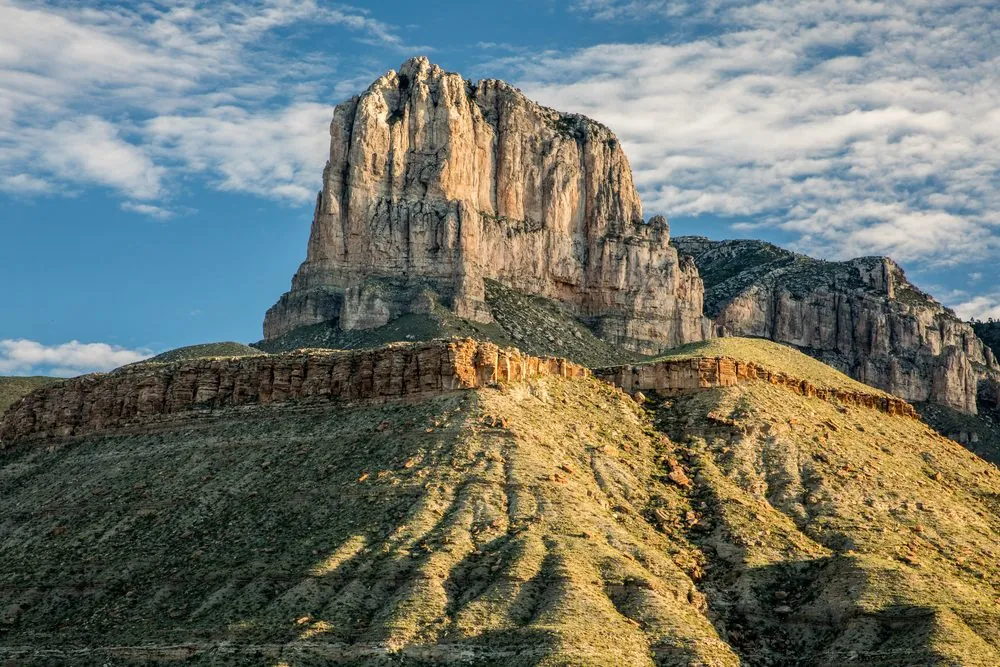
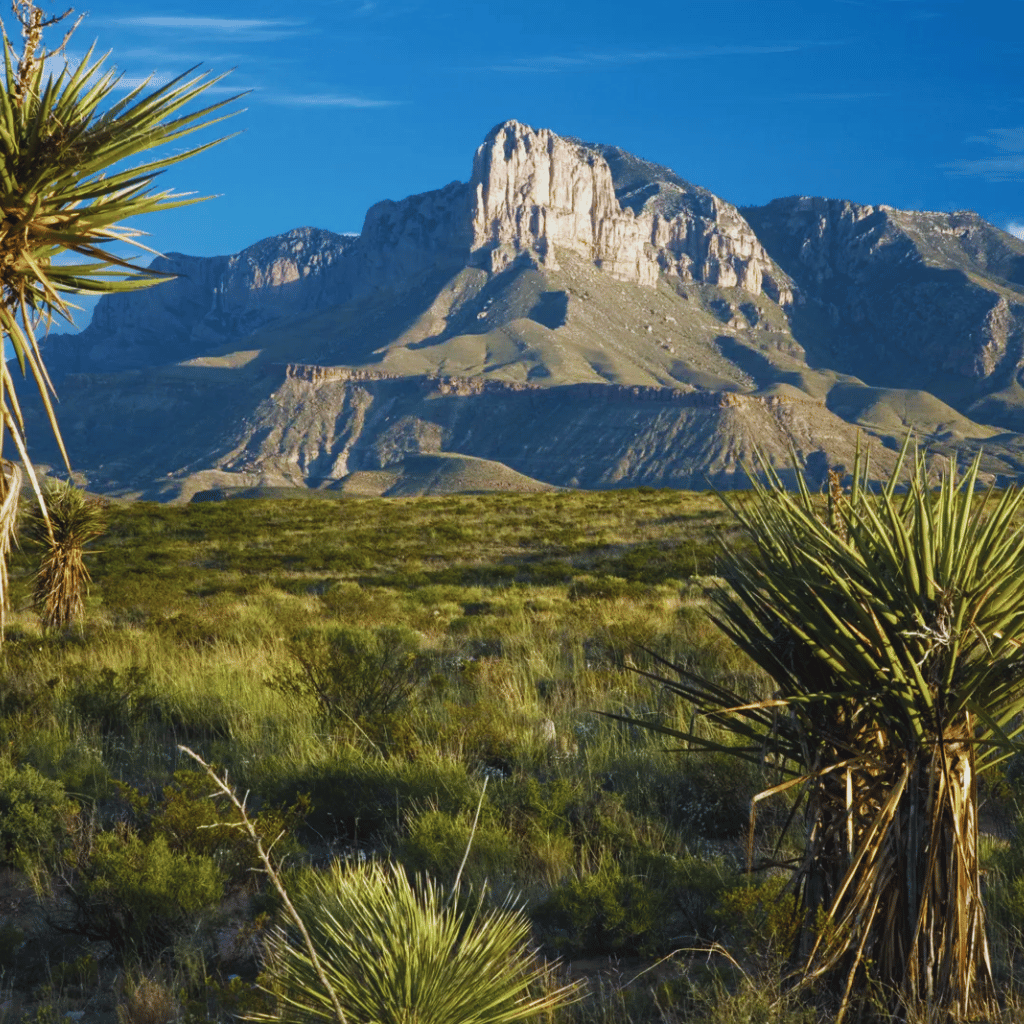
Guadalupe Mountains National Park, Texas is a hidden gem in the heart of the Chihuahuan Desert. Known for its rugged peaks, diverse wildlife, and stunning vistas, this park offers a unique escape for avid hikers and nature lovers alike. The best time to visit is from October to April, when the weather is cool and pleasant.
Guadalupe Peak
Standing at 8,749 feet, Guadalupe Peak is the highest point in Texas. The trek to the summit is a challenging 8.4-mile round trip that rewards you with breathtaking panoramic views. You’ll encounter diverse terrains, from desert lowlands to alpine forests. The hike typically takes 6-8 hours, so pack plenty of water and snacks. Don’t forget your camera to capture the stunning vistas!
Flora and Fauna
The park boasts diverse flora and fauna, thanks to its varying elevations and ecosystems. You’ll see everything from desert cacti and yuccas to lush pine forests. Wildlife includes mule deer, elk, black bears, and over 300 bird species. Keep an eye out for rare plants like the Guadalupe Mountains Fritillary and the unique Texas madrone tree with its smooth, red bark.
Top Attractions
- El Capitan: A prominent limestone peak offering stunning views and a rich history tied to Native American cultures.
- McKittrick Canyon: Known for its striking fall foliage, this canyon is perfect for a scenic hike.
- Salt Basin Dunes: Enormous gypsum sand dunes that are especially magical at sunset.
- Pine Springs Canyon: A tranquil spot with lush greenery and seasonal wildflowers.
Hidden Gems
- Devil’s Hall Trail: A less-visited trail featuring natural stone staircases and narrow canyons.
- Smith Spring Loop: A serene 2.3-mile loop offering a lush oasis amidst the desert.
- Dog Canyon: Remote and less crowded, perfect for solitude and spotting wildlife.
Accommodations
| Type | Location | Features | Price Range |
|---|---|---|---|
| Pine Springs Campground | Park entrance | Basic amenities, stunning views | $15 per night |
| Dog Canyon Campground | Northern park area | Quiet, remote, basic facilities | $15 per night |
| The Lodge at Cloudcroft | Nearby town | Historic lodge, modern comforts | $95-$150 per night |
| Budget Motels | Van Horn, TX | Basic accommodations, budget-friendly | $50-$80 per night |
Dining Highlights
Dining options within the park are limited, so plan to bring your own meals. Nearby Van Horn offers several options:
- Van Horn Cattle Company: Known for its hearty steaks and Western ambiance.
- Chuy’s Restaurant: A local favorite for Tex-Mex fare.
- RJ’s Grill: Ideal for a quick, budget-friendly meal.
- Getting There: The park is accessible by car, located about 110 miles east of El Paso. The nearest airport is El Paso International Airport.
- Getting Around: A car is essential for exploring the park due to its remote location and scattered attractions.
- Seasonal Variations: Fall and spring offer the best weather for hiking. Summer temps can soar, making high elevations preferable. Winter can bring snow at higher elevations.
- Sustainability Tips: Carry reusable water bottles, practice Leave No Trace principles, and respect wildlife habitats.
- Budget Considerations: Entry fees are moderate; lodging within the park is economical, but book ahead during peak seasons.
Guadalupe Mountains National Park offers an unparalleled adventure with its diverse landscapes and rich biodiversity. Whether you’re summiting Texas’s highest peak or exploring hidden trails, your visit promises a rewarding, unforgettable experience.
Channel Islands National Park, California
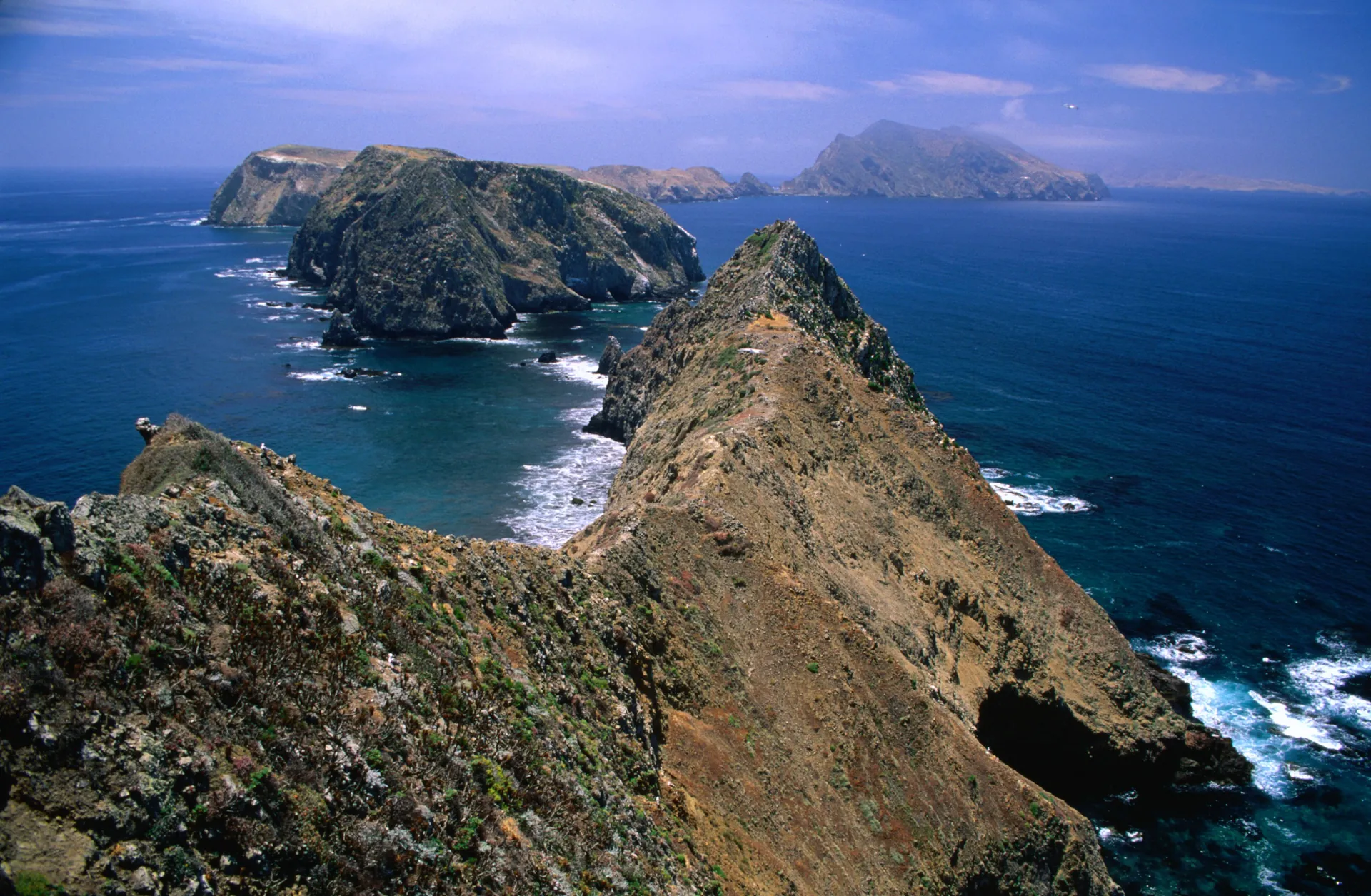
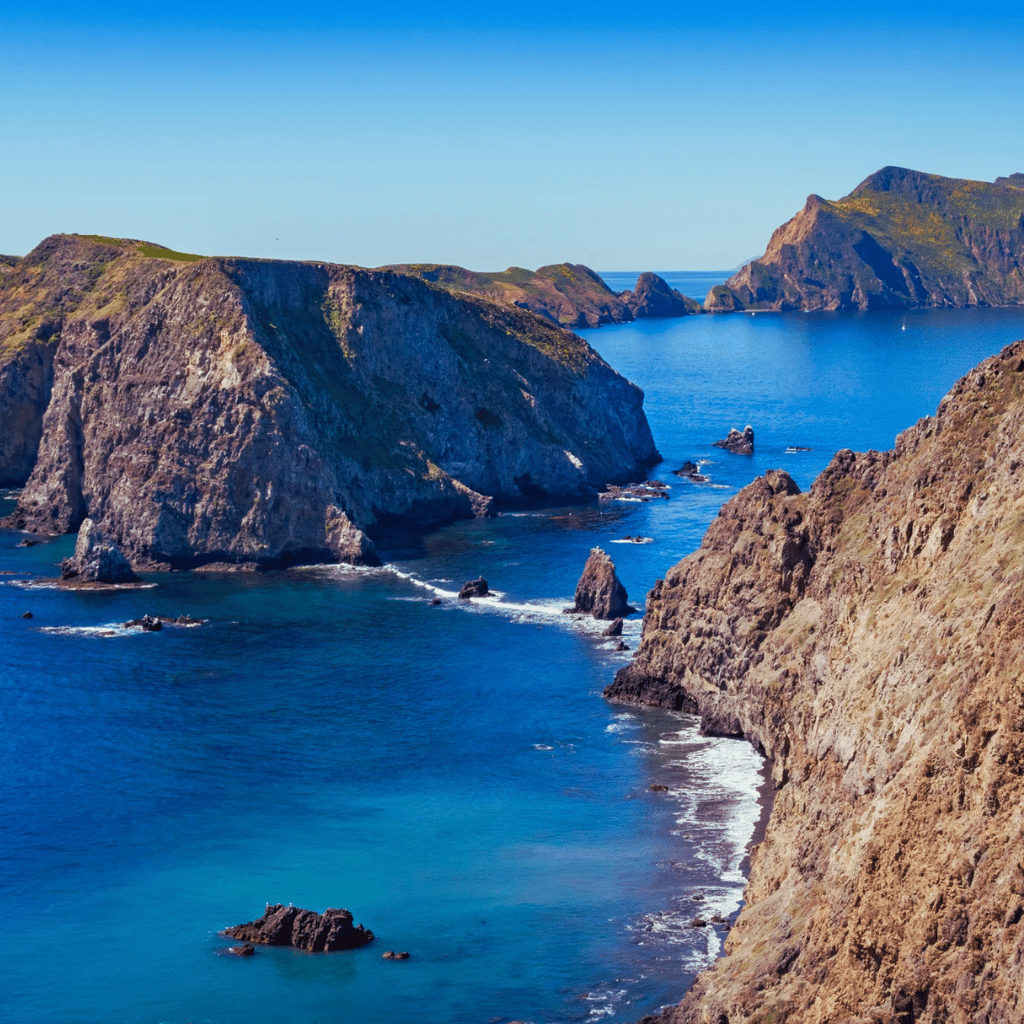
Channel Islands National Park offers a unique escape just off the coast of Southern California. Often called the “Galápagos of North America,” it provides stunning landscapes, diverse wildlife, and thrilling outdoor adventures.
Island Hiking Trails
Experience the untouched beauty of Channel Islands through its scenic hiking trails. Each island offers a distinct experience:
- Anacapa Island: Explore the 2-mile Inspiration Point Trail for panoramic ocean views and seabird sightings.
- Santa Cruz Island: Hike the challenging 8-mile Montañon Ridge Trail for stunning vistas and diverse ecosystems.
- Santa Rosa Island: Traverse the rugged Torrey Pines Trail, home to one of the world’s rarest pine species.
- San Miguel Island: Discover the island’s history on the Nidever Canyon Trail, featuring rugged cliffs and the historic Cabrillo Monument.
- Santa Barbara Island: Walk the 5-mile Loop Trail for sweeping ocean views and wildflower fields.
Marine Life Viewing
Channel Islands is a prime spot for marine life enthusiasts. The park’s pristine waters teem with biodiversity:
- Whale Watching: Spot migrating gray whales from December to April and blue whales from May to September.
- Dolphins: Encounter playful pods of common dolphins year-round.
- Sea Lions & Seals: Observe these marine mammals lounging on the shores of Santa Barbara Island.
- Snorkeling & Diving: Explore vibrant kelp forests home to Garibaldi, sea stars, and spiny lobsters.
- Tide Pools: Discover colorful tide pools on the beaches of Santa Cruz and Anacapa Islands, brimming with starfish, sea anemones, and hermit crabs.
Top Attractions
- Scorpion Ranch: Visit this historic ranch on Santa Cruz Island, offering a glimpse into the island’s ranching past.
- Painted Cave: Explore one of the world’s largest sea caves on Santa Cruz Island.
- Anacapa Island Lighthouse: Tour this iconic lighthouse and enjoy breathtaking views of the Pacific.
- Torrey Pines: See one of the rarest pine species in the world on Santa Rosa Island.
- Cabrillo Monument: Learn about the island’s history on San Miguel Island, honoring explorer Juan Rodríguez Cabrillo.
Hidden Gems
- Potato Harbor Overlook: Enjoy secluded views on Santa Cruz Island.
- Chinese Harbor: Explore the tranquil beaches of Santa Cruz Island.
- Black Mountain: Hike to this less-visited peak on Santa Rosa Island for unparalleled views.
Accommodations
Finding a place to stay near Channel Islands requires planning. Here’s a comparison to help you choose:
| Type | Location | Cost/night | Features |
|---|---|---|---|
| Camping | Scorpion Anchorage | $15 | Basic amenities, stunning views, access to hiking trails |
| Ranch House | Santa Rosa Island | $100 | Historic ambiance, scenic location, limited facilities |
| Hotels | Ventura, CA | $150 – $300 | Modern comforts, dining options, proximity to ferry |
| Vacation Rentals | Ventura/Oxnard | $200 – $400 | Privacy, kitchen facilities, family-friendly |
Dining Highlights
Channel Islands has no dining facilities, so bring your own food. You’ll find several dining options in Ventura before heading out:
- Spencer Makenzie’s: Enjoy fresh seafood and famous fish tacos.
- Café Nouveau: Delight in a hearty breakfast or brunch before your island adventure.
- Lure Fish House: Savor local seafood and a laid-back coastal vibe.
- Getting There: Reach the islands by ferry operated by Island Packers, with options starting at $60 round trip.
- Best Time to Visit: Spring and fall offer mild weather and fewer crowds.
- Climate: Channel Islands boasts a Mediterranean climate with cool, wet winters and warm, dry summers.
- Sustainability Tips: Pack out all trash, use biodegradable soap, and avoid disturbing wildlife.
- Packing Essentials: Bring layered clothing, sun protection, sturdy hiking boots, and plenty of water.
A journey to Channel Islands National Park promises a blend of adventure, serene landscapes, and rich wildlife encounters. Embrace the tranquil beauty of this remarkable destination and create lasting memories.
Pinnacles National Park, California

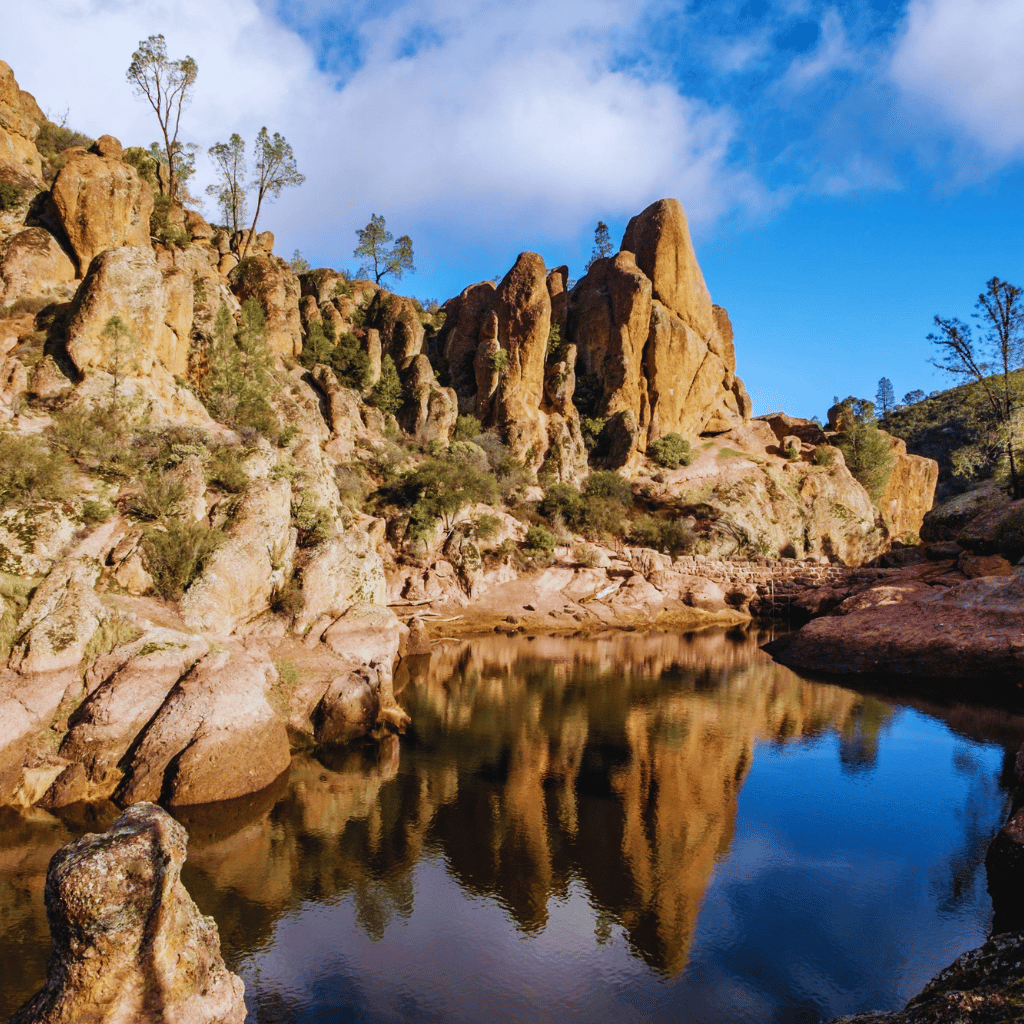
Nestled in Central California, Pinnacles National Park offers dramatic landscapes and unparalleled rock formations that inspire adventurers and nature lovers. Whether you’re a seasoned climber or a hiking enthusiast, this park provides diverse experiences with boulder-strewn vistas and fascinating volcanic structures. Pinnacles is best visited in spring and fall when temperatures are moderate. Expect an engaging blend of natural beauty and exciting outdoor opportunities.
Unique Rock Formations
Step into a world shaped by ancient volcanic activity. The park’s standout features include towering spires, deep canyons, and massive boulder fields, offering uniquely rugged terrain and stunning geological marvels. The High Peaks Trail presents panoramic views of these formations, while the Bear Gulch Cave Trail allows you to wander through intriguing talus caves. For a hidden gem, explore the Balconies Cliffs and Cave Loop, where shadows and light create a mystical atmosphere.
Rock Climbing
Pinnacles is a haven for climbers. With over 200 routes, the park caters to various skill levels from beginner to expert. The East Side is known for its easier climbs and popular sites like Discovery Wall, while the West Side boasts challenging routes at Handley Rock and The Hideout. Don’t forget your helmet; the volcanic rock can be brittle. Access permit requirements and weather conditions before embarking, ensuring a safe and exhilarating climbing experience.
U.S. Virgin Islands National Park

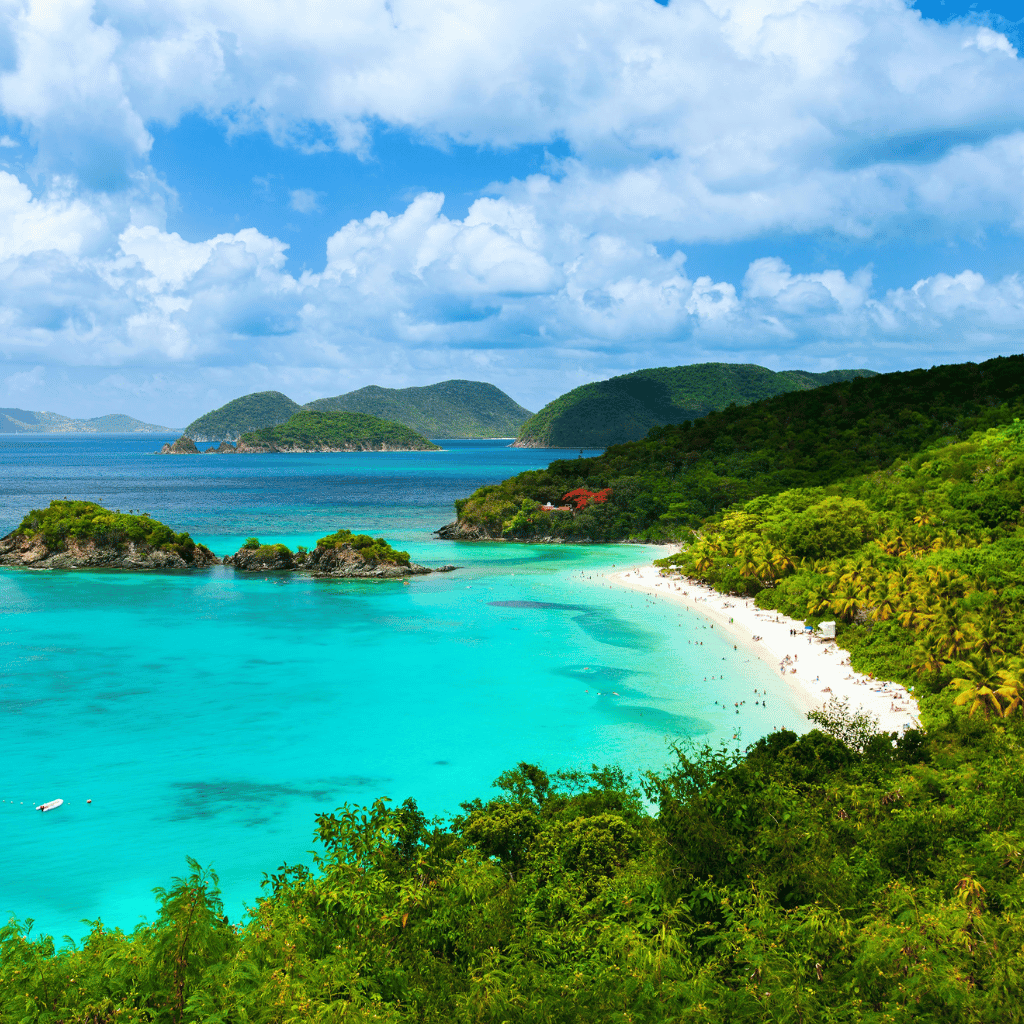
Nestled in the Caribbean, U.S. Virgin Islands National Park offers an idyllic escape with few crowds. Think vibrant coral reefs and lush tropical landscapes. With pristine beaches and clear blue waters, it’s a paradise for diverse travelers.
Coral Reefs Exploration
Explore vibrant coral reefs at U.S. Virgin Islands National Park, a diver’s dream. Popular spots like Trunk Bay feature an underwater snorkeling trail with plaques describing marine life. Kaneohe Bay boasts schools of colorful fish, making it perfect for beginners. For the adventurous, the depths of Tektite Reef promise encounters with stingrays and sea turtles.
- Top Reefs to Visit:
- Trunk Bay: Known for its underwater snorkeling trail.
- Cinnamon Bay: Offers clear waters and abundant marine life.
- Tektite Reef: Ideal for advanced divers, featuring stingrays and sea turtles.
Tropical Atmosphere
Immerse yourself in the tropical ambiance of U.S. Virgin Islands National Park, where lush rainforests meet sun-kissed beaches. Hike the Reef Bay Trail to see ancient petroglyphs amidst tropical foliage. Enjoy the serene beauty of Hawksnest Beach, perfect for relaxation. The park’s varied climate makes every visit unique – dry seasons from December to April are ideal for sunbathing, while May to November brings lush greenery and occasional showers.
- Best Beaches to Unwind:
- Hawksnest Beach: Famous for its calm waters and scenic views.
- Maho Bay: Offers shallow waters, great for families.
- Salt Pond Bay: Less crowded, ideal for a peaceful day.
Accommodations
The park offers diverse lodging options, from budget-friendly campsites to luxurious beachfront resorts. Here’s a comparison to help you choose:
| Accommodation | Type | Price Range (per night) | Features |
|---|---|---|---|
| Cinnamon Bay Campground | Campsite/Lodge | $45-$195 | Direct beach access, family-friendly, various amenities |
| Caneel Bay Resort | Luxury Resort | $450-$1,500 | Private beach, fine dining, water activities |
| Estate Concordia | Eco-Tents/Studios | $125-$250 | Sustainable, ocean views, eco-friendly |
Dining Highlights
Satisfy your taste buds with local cuisine and fresh seafood. Try Miss Lucie’s for authentic Caribbean dishes like conch fritters. The Terrace offers fine dining with views of Cruz Bay. Skinny Legs is perfect for casual dining with delicious burgers and a laid-back atmosphere.
Transportation & Practical Tips
Getting there is easy with regular flights to St. Thomas, followed by a ferry to St. John. Rent a jeep for flexibility, essential for exploring hidden trails and beaches. Pack essentials like sunblock, reef-safe sunscreen, and insect repellent. Remember to practice sustainability; avoid single-use plastics and support local businesses.
Sustainability Tips
Respect the pristine environment by following Leave No Trace principles. Support local conservation efforts and choose eco-friendly accommodations like Estate Concordia.
Black Canyon of the Gunnison National Park, Colorado
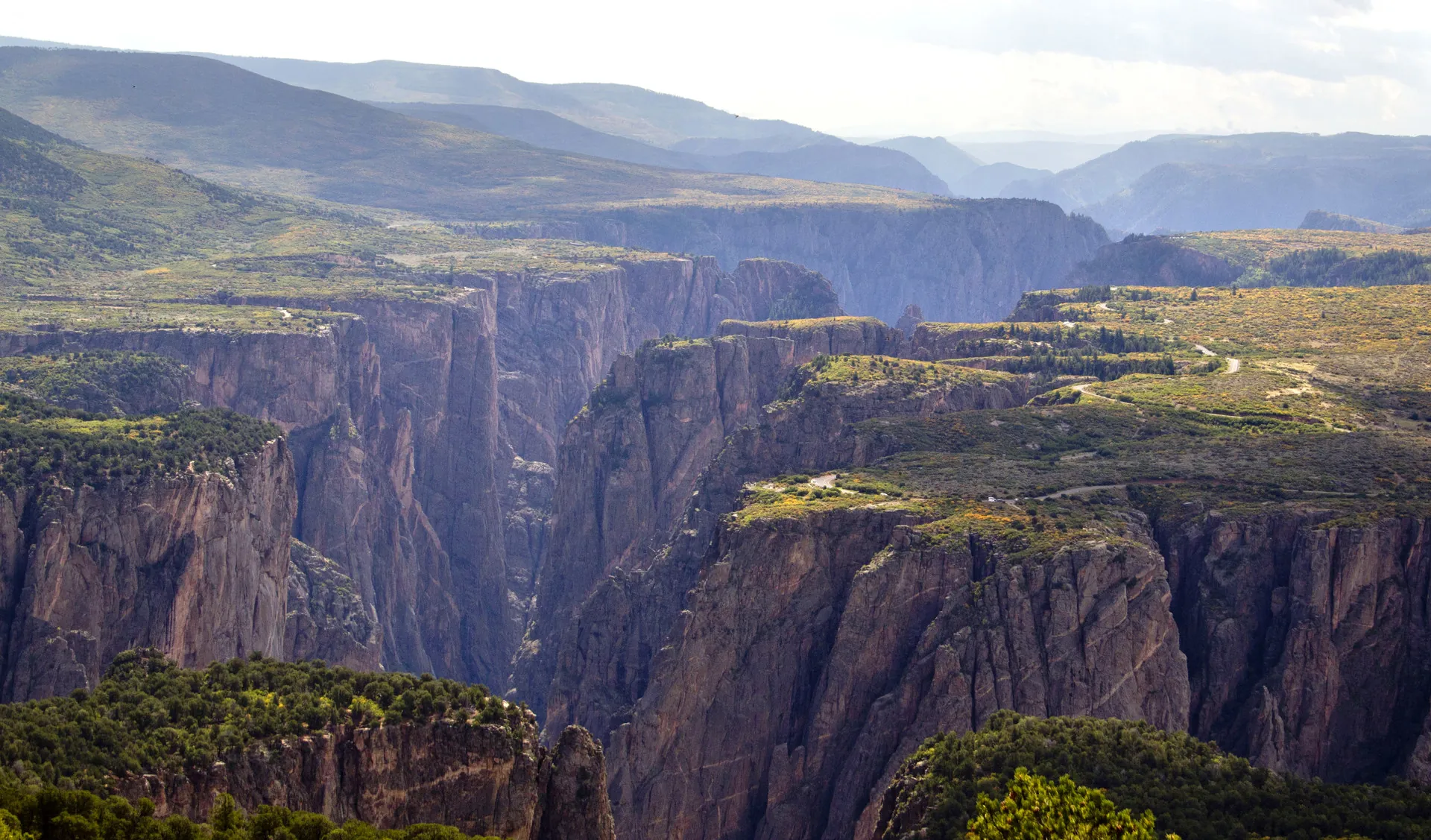
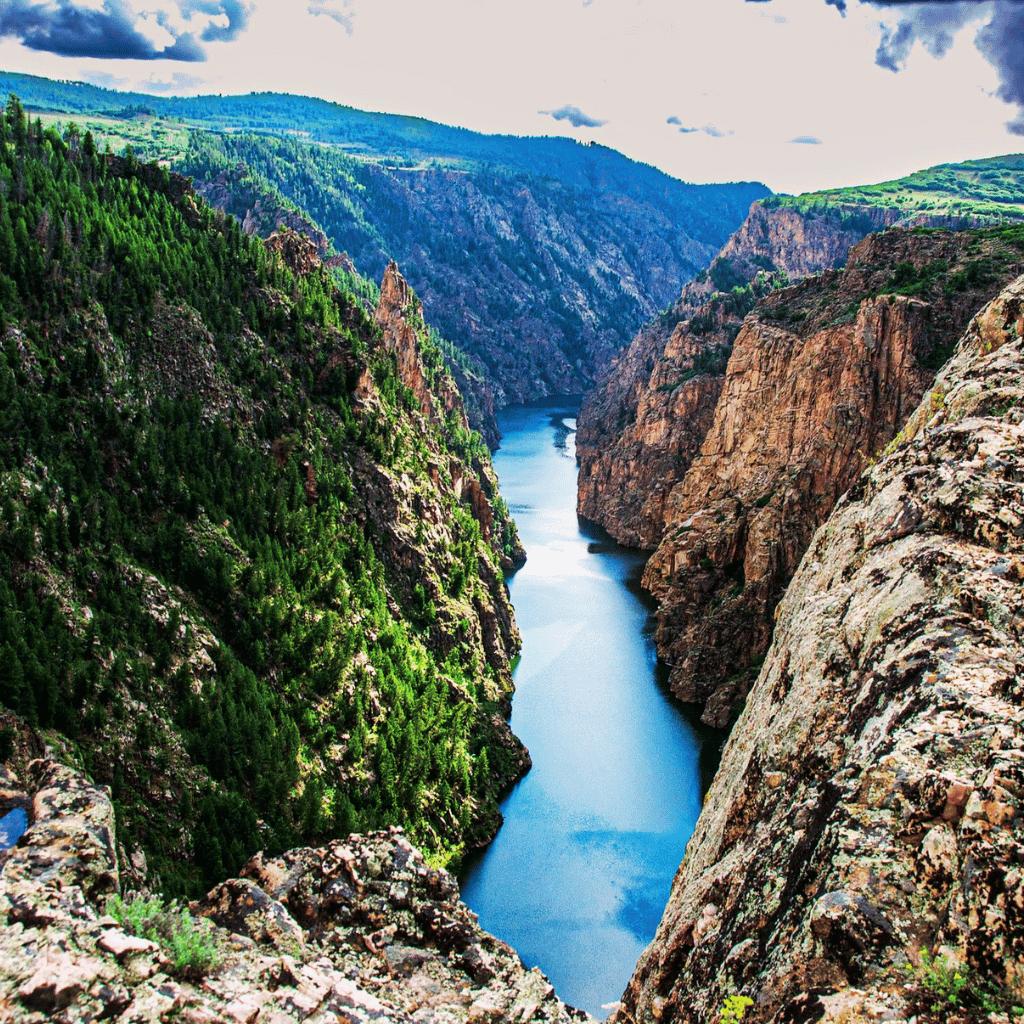
Situated in western Colorado, the Black Canyon of the Gunnison National Park offers stunning and dramatic landscapes carved over millions of years. Known for its sheer cliff walls and narrow canyons, this park provides a breathtaking escape from the hustle and bustle of everyday life. The best time to visit is from late spring to early fall when temperatures are moderate.
Steep Cliff Views
Explore jaw-dropping vistas from numerous lookout points. The South Rim Drive offers 12 panoramic overlooks, including the iconic Painted Wall, the tallest cliff in Colorado. For a more immersive experience, take the Warner Point Nature Trail, a 1.5-mile hike that provides sweeping views of the canyon and Gunnison River far below. The North Rim delivers a more secluded experience with fewer visitors and equally spectacular views, accessible via numerous overlooks like the Chasm View.
River Activities
Engage in thrilling river activities on the Gunnison River. Whitewater rafting is popular from late May through June when water levels are high enough for challenging runs through the canyon’s steep drops and roaring rapids. If kayaking appeals to you, advanced routes like the Gunnison Gorge offer an exhilarating blend of class III to V rapids, perfect for experienced paddlers. Fishing enthusiasts can try their hand at catching trout, with designated gold medal waters known for an abundance of rainbow and brown trout. Always check local regulations and safety guidelines before heading out.
Top Attractions
- South Rim Road: A scenic route with 12 overlooks.
- Painted Wall: The tallest cliff in Colorado.
- Warner Point Nature Trail: A moderate hike with expansive views.
- North Rim Lookouts: Secluded overlooks offering stunning vistas.
Hidden Gems
- Exclamation Point: A less-visited lookout with memorable views.
- Curecanti Creek Trail: A 2-mile trail leading to the Gunnison River.
- Morrow Point Boat Tour: A guided boat tour exploring the canyon’s depths.
Accommodations
| Type | Location | Amenities | Price Range ($) |
|---|---|---|---|
| South Rim Campground | Near South Rim Drive | Tent and RV sites, drinking water, restrooms | 16-22 |
| North Rim Campground | Near North Rim Road | Tent-only sites, vault toilets | 16 |
| Montrose Hotels | 15 miles from South Rim | Hotels with modern amenities | 80-150 |
Dining Highlights
Dining options within the park are limited, so packing meals is essential. Nearby Montrose offers a variety of restaurants. Enjoy local favorites like Horsefly Brewing Company for craft beers and City Market for grocery supplies.
Transportation & Practical Tips
To access the park, fly into Montrose Regional Airport, which is roughly a one-hour drive. Car rentals are available at the airport. Both South Rim and North Rim are accessible via separate entrances, so plan accordingly.
Practical Tips:
- Dress in layers to accommodate changing temperatures.
- Pack sufficient water and food, particularly if exploring the more remote North Rim.
- Use sustainable practices such as packing out all trash and staying on marked trails to help preserve the park’s natural beauty.
A visit to Black Canyon of the Gunnison National Park promises awe-inspiring views and thrilling activities, providing a memorable adventure in one of Colorado’s most dramatic landscapes.
Kenai Fjords National Park, Alaska
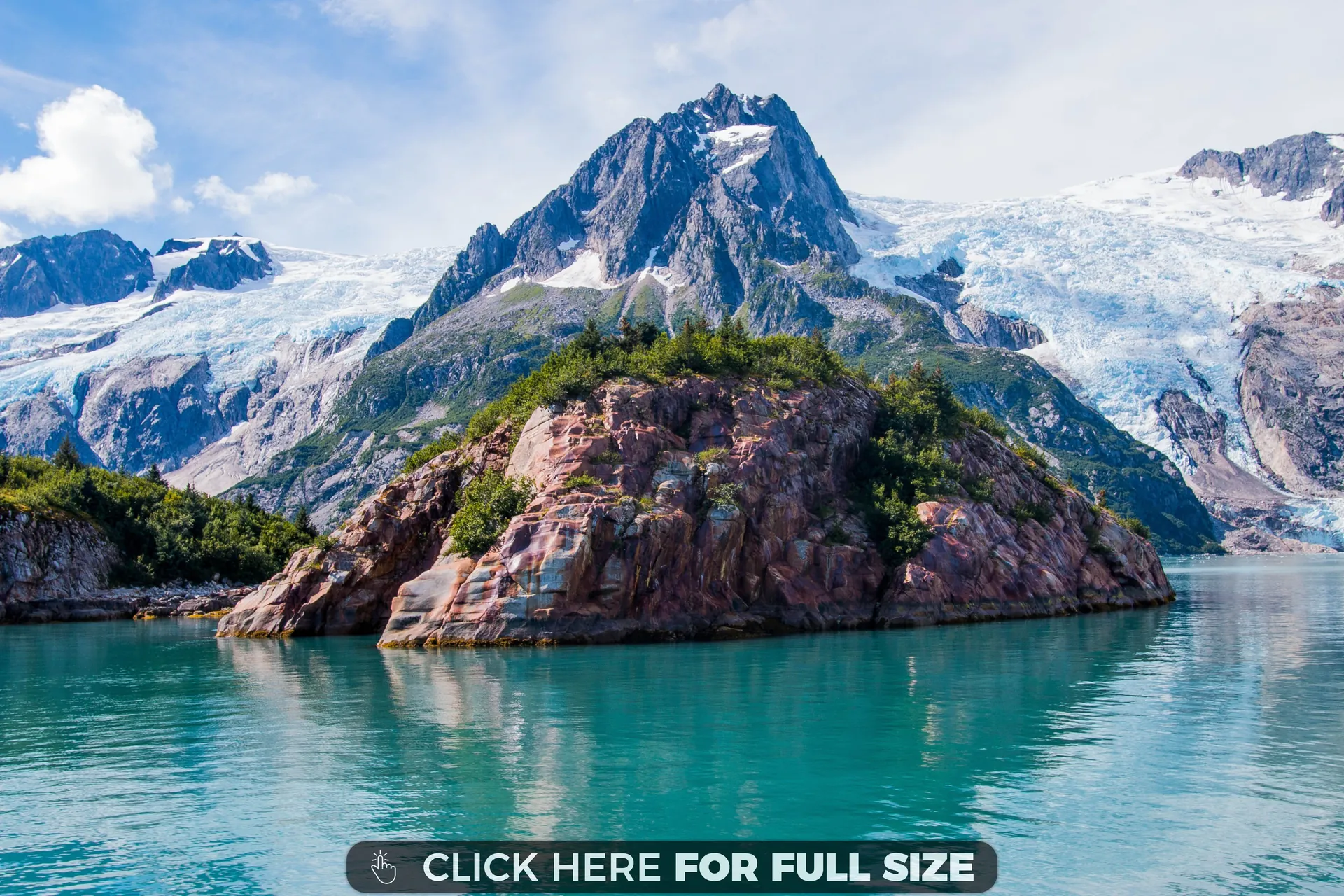
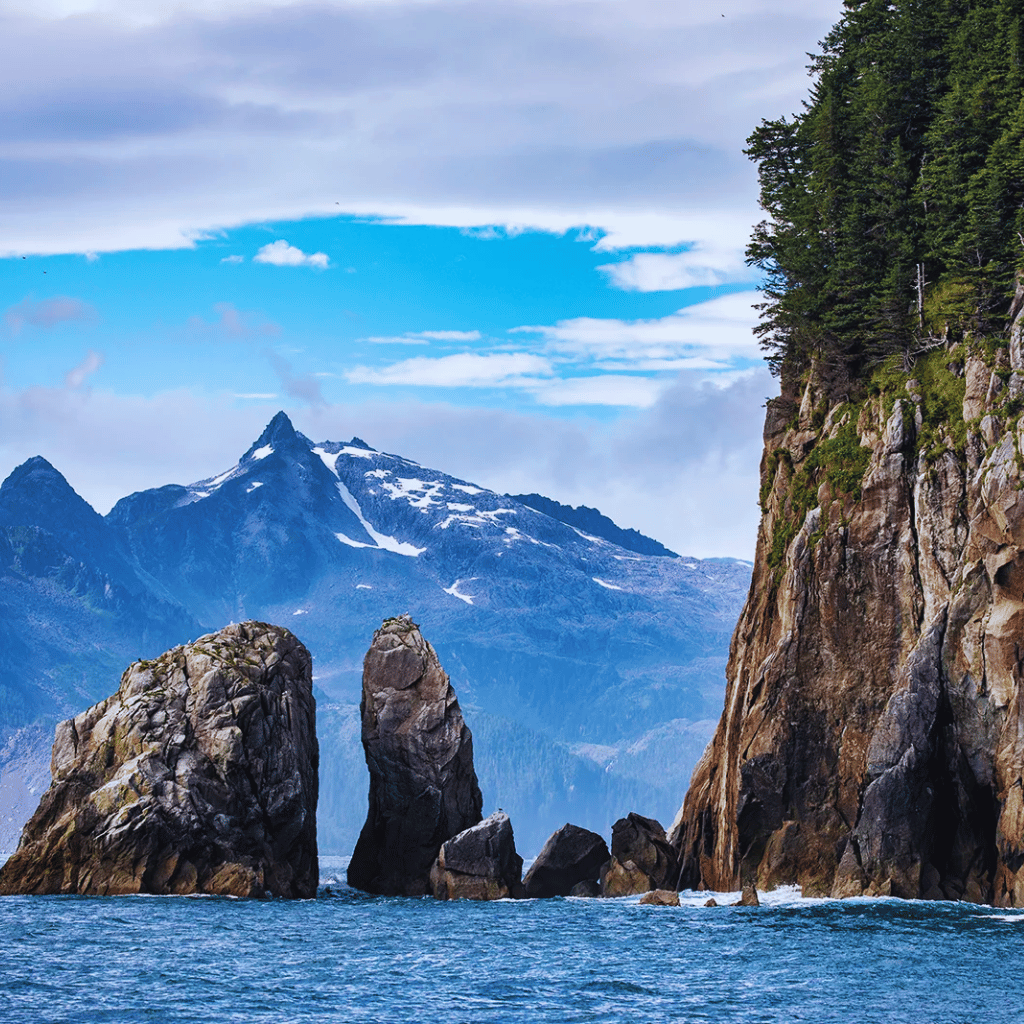
Kenai Fjords National Park offers a breathtaking escape into the rugged beauty of Alaska’s wilderness. Known for its spectacular fjords, towering glaciers, and diverse marine wildlife, this park is a haven for adventure seekers and nature lovers alike.
Glacial Scenery
Imagine a world dominated by towering ice formations, with the thunder of calving glaciers echoing across the fjords. That’s what you’ll experience at Kenai Fjords National Park. The park is home to the massive Harding Icefield, which feeds 38 glaciers. One of the most accessible glaciers is Exit Glacier, where you can take a hike along the Edge Loop Trail and get up close to this frozen giant. For a more immersive experience, consider a guided ice climbing adventure or a helicopter tour for an aerial view of the park’s icy expanses.
Wildlife Cruises
Begin on a wildlife cruise and navigate the park’s dramatic coastline, where every turn reveals new wonders. These cruises offer the chance to see a variety of marine life, including humpback whales, orcas, sea otters, and puffins. Opt for a six-hour cruise to experience all the major fjords and glaciers, or take a shorter three-hour tour if you’re pressed for time. Local guides share fascinating insights about the park’s ecosystem and wildlife, making these cruises both educational and exhilarating.
Top Attractions
- Harding Icefield Trail: A challenging 8.2-mile round trip hike offering panoramic views of the icefield.
- Aialik Glacier: Best viewed from a kayak or a tour boat, this tidewater glacier is a must-see.
- Bear Glacier Lagoon: Experience the beauty of floating icebergs in this secluded lagoon.
Hidden Gems
- Holgate Glacier: Less crowded, offering a serene experience with fewer tourists.
- Northwestern Fjord: Perfect for those looking to escape the crowds and enjoy stunning scenery.
Accommodations
| Accommodation | Type | Price Range | Distance from Park | Amenities |
|---|---|---|---|---|
| Kenai Fjords Glacier Lodge | Lodge | $$$ | Within Park | All-inclusive, wildlife tours |
| Resurrection Lodge | B&B | $$ | 3 miles | Breakfast, ocean views |
| Seward Windsong Lodge | Hotel | $$ | 10 miles | Shuttle service, restaurant |
| Millers Landing | Campgrounds | $ | 7 miles | Boat rentals, guided tours |
Dining Highlights
While dining options within the park are limited, nearby Seward offers various choices. For fresh seafood, try Ray’s Waterfront, known for its Alaskan king crab and salmon. Head to The Cookery for a more upscale experience featuring locally-sourced ingredients and inventive dishes. Don’t miss Woody’s Thai Kitchen for a taste of authentic Thai cuisine with Alaskan twists.
- Best Time to Visit: June to September for milder weather and accessible trails.
- Getting There: Fly into Ted Stevens Anchorage International Airport and drive about 130 miles to Seward.
- Sustainability Tips: Take reusable water bottles, adhere to Leave No Trace principles, and support local eco-friendly tour operators.
- Budget Considerations: Plan ahead for accommodations and tours, as prices can be high during peak season. Opt for camping and self-guided tours to save money.
Kenai Fjords National Park promises an unforgettable adventure with its awe-inspiring landscapes and abundant wildlife. Begin on this Alaskan journey and immerse yourself in one of America’s most pristine wilderness areas.
Great Sand Dunes National Park and Preserve, Colorado
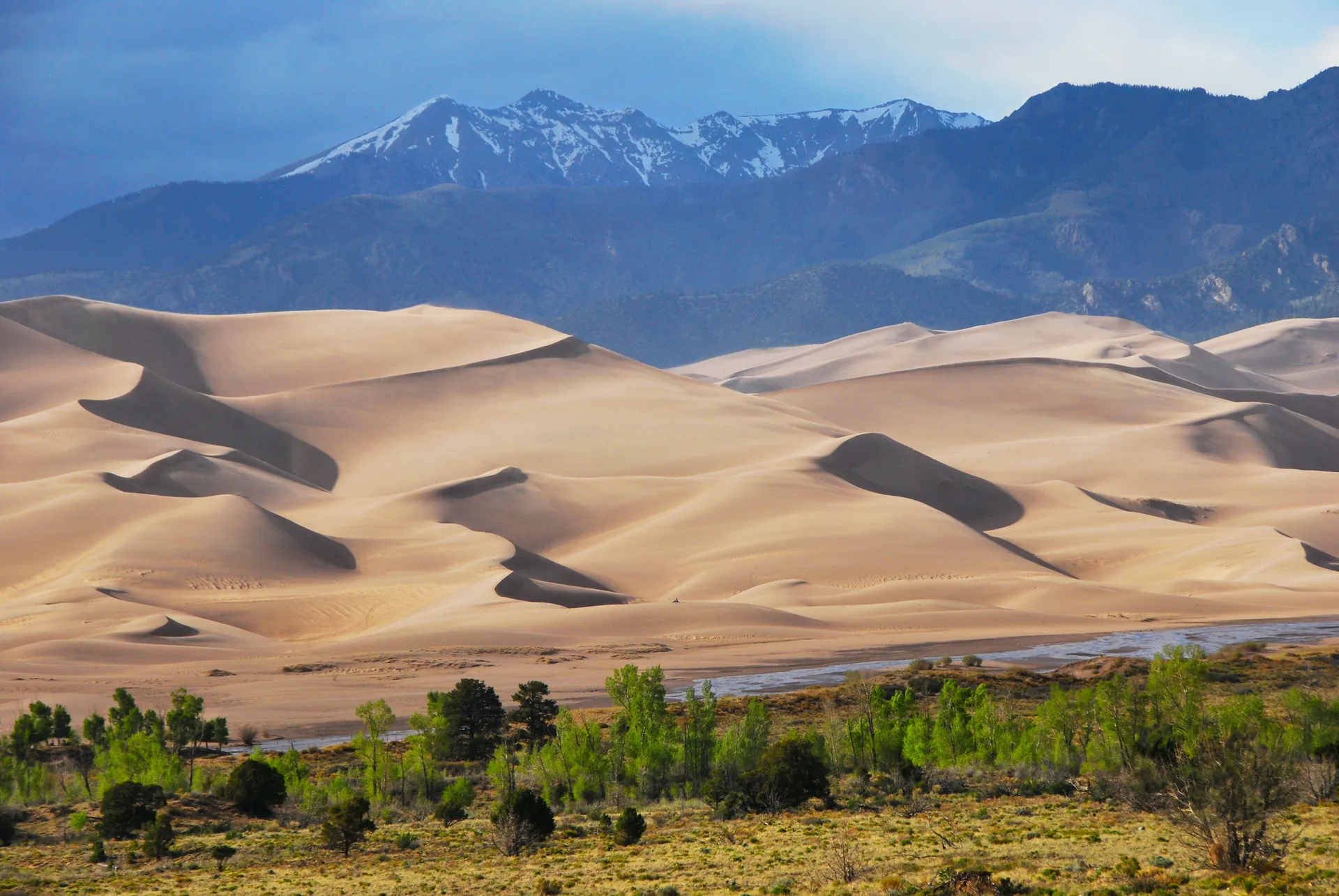
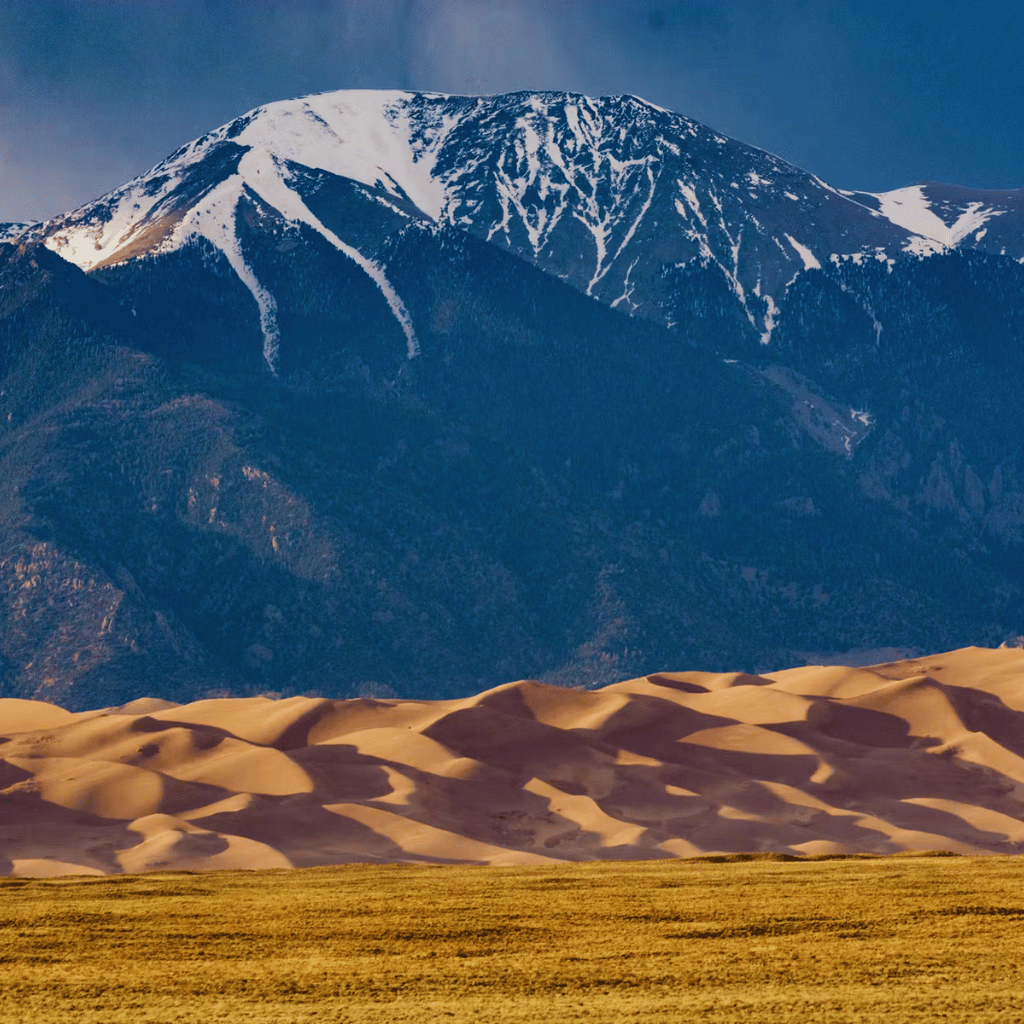
Exploring these lesser-known national parks offers you a chance to experience nature in its purest form. From the remote wilderness of Gates of the Arctic to the tropical allure of the National Park of American Samoa, each park provides a unique adventure. Whether you’re captivated by the rugged peaks of Guadalupe Mountains or the aquatic wonders of Voyageurs, these parks promise solitude and unforgettable experiences.
By choosing these hidden gems, you not only escape the crowds but also support the preservation of these pristine environments. Embrace the opportunity to connect with nature and discover the untamed beauty that awaits you in these least visited US national parks.
Frequently Asked Questions
What are some lesser-known national parks in the US worth visiting?
Lesser-known national parks like Gates of the Arctic National Park, Katmai National Park, and Isle Royale National Park offer stunning landscapes and unique adventures with fewer crowds.
When is the best time to visit Gates of the Arctic National Park in Alaska?
The best time to visit Gates of the Arctic National Park is from late June to early September, when the weather is moderate and daylight hours are long.
How can I get to Dry Tortugas National Park?
Dry Tortugas National Park is accessible only by boat or seaplane, providing an exclusive experience for visitors.
What activities can I do in Kobuk Valley National Park?
In Kobuk Valley National Park, visitors can enjoy hiking, sandboarding on the Great Kobuk Sand Dunes, and wildlife spotting, including caribou migrations.
What makes the National Park of American Samoa unique?
The National Park of American Samoa is unique for its lush tropical rainforests, vibrant coral reefs, and rich cultural heritage preserved by the Samoan people.
What are the accommodation options in Wrangell-St. Elias National Park?
Accommodation options in Wrangell-St. Elias National Park range from free dispersed camping to rustic cabins and lodges, with limited dining available.
Which national park is known as the “American Alps”?
North Cascades National Park in Washington is known as the “American Alps” due to its dramatic peaks, over 300 glaciers, and numerous waterfalls.
What should I prepare for a visit to Katmai National Park?
Visitors to Katmai National Park should prepare for bear encounters, extreme weather, and limited accommodations, as well as plan for access primarily by floatplane.
Can you snorkel in U.S. Virgin Islands National Park?
Yes, U.S. Virgin Islands National Park offers prime snorkeling spots like Trunk Bay and Tektite Reef with vibrant coral reefs and marine life.
What should I know before visiting Great Basin National Park?
Before visiting Great Basin National Park, plan trips between May and October, dress in layers for varied weather, and consider sustainability practices to protect the environment.

